Language selection
- Français fr

Application for a Visitor Visa (Temporary Resident Visa - TRV)
You need to give your biometrics.
In most cases, you now need to give your fingerprints and photo (biometrics) after you apply.
Find out who needs to give biometrics and how the new application process works.
Biometrics and the application process

We refer to your fingerprints and photo as biometrics. We collect biometrics for most applications. Find out what happens from when you submit your application to when you get to Canada and where biometrics fits in the process.
1. Apply for your visitor visa, study permit or work permit
If you want to visit, study or work in Canada, make sure you’re eligible to apply. Use our application guides to help fill out your application properly, then submit your application.
Avoid processing delays by sending us a complete application .
2. Get your fingerprints and photo taken
If you’re between 14 and 79 years old, you probably need to give your fingerprints and photo (biometrics).You only need to give your biometrics once every 10 years to make repeat trips to Canada easier.
- You must pay the biometrics fee when you submit your application. Otherwise you may experience delays.
- Get this done as soon as you get the letter from us that tells you to give biometrics.
- You have 30 days to do this from the date on the letter.
Find out who needs to give , how to give , and where to give your biometrics .
COVID-19: Biometrics deadline
Some biometrics collection sites are closed. If the site closest to you is closed, we’ll extend your deadline to give your biometrics. Find out how COVID-19 is affecting biometrics .
3. We process your application
After we get your biometrics, we start processing your application. See how long it takes to process your application.
If we need more information from you, we’ll contact you.
4. We make a decision on your application
When we finish reviewing your application, we let you know if you’re approved to come to Canada. If you are, we issue your documents.
If your application is refused, we send you a letter that tells you why.
5. You travel to Canada (if you’re approved)
Make sure you travel with the documents we gave you. This includes travel documents like a visitor visa, study or work permits or an eTA (electronically linked to your passport).
Airline staff and border service officers at ports of entry will ask to see your travel documents. If you don’t have them, you may not be able to board your flight to Canada.
Make sure children under 18 travel with the right documents .
6. We check your identity when you arrive in Canada
When you arrive, we check your identity to make sure that you are the same person who was approved to travel to Canada. We may use your biometrics to do this.
If we can’t verify your identity, you may be detained by a border services officer. These officers help protect the health and safety of Canadians.
If the officer determines that you’re not admissible to Canada, you won’t be allowed to enter Canada. If you came by air, you’ll have to take a return flight to where you came from.
7. You’re allowed to enter Canada
If you pass the identity check and meet the entry requirements , the border services officer stamps your passport and lets you know how long you can stay in Canada. You’re normally allowed to stay in Canada for up to six months.
Children under 18 must meet the same entry requirements as adults. The border services officer may ask minor children to show other documents depending on whether the child is travelling alone or with someone.
Basic entry requirements
You must meet some basic requirements to enter Canada. You must:
- have a valid travel document, like a passport
- be in good health
- have no criminal or immigration-related convictions
- convince an immigration officer that you have ties—such as a job, home, financial assets or family—that will take you back to your home country
- convince an immigration officer that you will leave Canada at the end of your visit
- The amount of money you will need depends on how long you will stay and if you will stay in a hotel, or with friends or relatives.
Some people are not admissible to Canada, which means they are not allowed to enter the country. You can be inadmissible for several reasons, including being involved in:
- criminal activity
- human rights violations
- organized crime
You can also be inadmissible for security, health or financial reasons.
Find out more about inadmissibility .
Biometrics fee
- Individual applicant: CAD $85
- Families applying at the same time : maximum total fee of CAD $170
- Groups of 3 or more performing artists and their staff who apply for work permits at the same time: maximum total fee of $CAD 255
You can apply online or on paper (in specific situations) for:
- visitor visas (also known as temporary resident visas)
- super visas (for parents and grandparents)
- transit visas
Apply online
Before you apply, make sure you need a visa to enter Canada. Find out what document you need to enter Canada .
You must have both of these to apply online:
- access to a scanner or camera to create electronic copies of your documents to upload
- a valid credit card to pay with
How you apply depends on what you apply for. Select the document you want to apply for to get instructions:
Visitor visa : Option 1 of 3
Apply for a visitor visa
Super visa (for parents and grandparents) : Option 2 of 3
Apply for a super visa
Transit visa : Option 3 of 3
Apply for a transit visa
Apply on paper (in specific situations)
Before you apply , make sure you need a visa to enter Canada. Find out what document you need to enter Canada .
Read the instruction guide to get all the details to apply on paper.
- Instruction Guide 5256
Once you have read the guide, you can prepare your application package. You must select the country or territory from which you will apply to get your local visa office instructions.
Permanent residents of Canada
We do not issue temporary resident visas (TRV) to permanent residents (PR). If you are outside Canada without a valid PR card, you must apply for a permanent resident travel document (PRTD) instead. If you meet the requirements for a PRTD, you can return to Canada as a PR.
If you no longer want to be a PR, or if you know you do not meet the requirements to keep your PR status, you can voluntarily give up (renounce) your PR status to apply for a TRV.
Application for Temporary Resident Visa
You can’t fill out and save the application form using your Internet browser. To use the form, you need to:
- Use your computer (Mac or PC). The form won’t open on mobile devices (iPads, tablets, mobile phones, etc.)
- Install Adobe Reader 10 (or higher)
- Download the PDF file to your computer . Save the file in a place you can remember.
- Make sure you use Adobe Reader to open the form. Sometimes if you try to open the form directly, it will use your Internet browser to try to open it.
Note: If you are applying online , you don’t need to print and sign the form. Leave the signature section empty.
Get the form
- Application for Temporary Resident Visa [IMM 5257] (PDF, 556.66 KB) June 2019
Having issues with the form?
- I can’t open my visa application form in PDF format. What can I do?
- After clicking the “validate” button on my visa application form, nothing happens and I don’t see the barcodes. Why is this happening?
How-to video

Find out if you are eligible

Living in Canada tool

Ministerio de Relaciones Exteriores del Perú
- Formularios
- Asistencia Legal y Humanitaria
Barra de vínculos superior
- Pasaportes Biométricos y Salvoconductos
- Registros Civiles
- Trámites Notariales
- Asistencia Consular
- Redes de Científicos Peruanos
- Solicitud Acceso a la Información Pública
- DNIs y Pasaportes por recoger
- Proceso de Elección de Consejo de Consulta 2023-2024
- Nueva Ley de Retorno
- Como sacar una cita
Inicio rápido
- Sobre el Consulado
- Gastronomía Peruana
- Enlaces de Interés para los peruanos en el Exterior
Issuance of Tourist Visa
- It is essential that your passport is valid for at least six months from your entry into Peru.
- Citizens traveling on Canadian passports do not require a Tourist Visa to enter Peru.
- Holders of Chinese or Indian passports with permanent residence or Canadian visa valid for at least six months before entering Peru do not require a visa to travel to Peru for tourism.
- The presentation of the visa application, and supporting documentation, does not guarantee its automatic granting. Each request is individually evaluated by the Consul.
- During the processing of the application, the presentation of additional requirements may be required.
- It allows multiple entries for a maximum stay of one hundred and eighty-three (183) days in total during a period of three hundred and sixty-five (365) days. It is not extendable.
- A Visa is no longer valid if it has not been used for admission to Peru after six (06) months from the date it was issued or at the end of the approved period of stay.
- Please submit your application at least 15 days before your trip, in person or by post. Please see requirements for each case below.
- Download and complete the following: Form DGC005 .
- Present the current passport . It must be valid for at least six months from your expected date of travelling to Peru.
- Canadian Permanent Resident Card or Temporary Resident.
- Reservation or round trip ticket.
- Hotel reservation; o Reservation of tourist package; or Letter of invitation.
- One (1) photograph of 35 x 45 mm., taken no more than six months before you sumbit your application . Plain white background. Your face and shoulders centred and squared to the camera, not tilted in any direction. Your eyes should be open and clearly visible, looking straight at the camera, with a closed mouth (not smiling or frowning). No glasses. No hats or head coverings, except those worn daily for religious beliefs.
- Sufficient financial documents to proof economic solvency .
- Payment of consular fees : 45.00 Canadian dollars in cash or debit card, to be paid at our office.
- Our booking system is autonomous and independent.
- The availability of dates that you see on your screen is the same that consular officers have access to.
- It is not possible to grant appointments on dates when they are no longer available.
- Sometimes new time slots are released due to cancellation. It is up to those interested to periodically review the calendar to check availability, using the link that you will find in your confirmation email.
- In order to avoid delays, you must bring the indicated requirements.
- Only the person registered for the appointment may enter the consular premises, except in duly justified cases.
- Download, complete and sign the following: Form DGC005 .
- Send the current passport .
- Proof that you are resident in Canada.
- If you are a Permanent Resident , we need a notarized copy of your Canadian Permanent Resident Card.
- If you are a Temporary Resident , we need a copy of your Working or Study Permit . Please also be sure that your visa to Canada is valid if you plan to return to Canada after your trip.
- Reservation or round trip ticket.
- One (1) 35 x 45 mm photographs. no older than six months , white background, front view, at the height of the mid-chest, without a frame, without garments on the head except garments of a religious nature, without glasses.
- A Canada Post Xpresspost prepaid envelope , small (if more than two passports, a medium envelope is required), with your name and the address where the passport will be sent. It is recommended to write down your tracking number. The Consulate does not assume any responsibility in case of loss.
- Payment of consular fees : 45.00 Canadian dollars to be paid by "Money Order" or "Certified Check" made payable to "Consulate of Peru".
Consulate General of Peru
Attention: Visas
502 – 1166 Alberni St.
Vancouver, BC V6E 3Z3
Language selection
- Français fr
Steps to apply for a visitor visa
- 1. About the document
- 2. Steps to apply
- 3. Who can apply
- 4. Supporting documents
- 6. After you apply

Step 1: Get the documents that show you meet the criteria for a visitor visa
Check the list of documents based on your situation
Step 2: Apply online
1. create an account.

2. Upload your documents

3. Pay your fees

How to apply for a visitor visa

Step 3: Give your fingerprints and photo (biometrics)
Normally, you need to give biometrics. If your local visa application centre is not open due to COVID-19, there are temporary measures in place for biometrics.
Find out what to do for your biometrics

How we process your application
We’ll check your application to make sure you have all the documents you need.
If it’s incomplete, we’ll return your application without processing it.
If we approve your application, we’ll ask you to send us your passport.

Send us your passport (if we approve your application)
To get your visa, follow the instructions we’ll send to you.
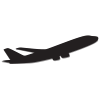
Prepare for your travel to and arrival in Canada
You may need to bring with you documents you submitted with your visa application, or present additional documents to the border services officer on arrival in Canada.
Check the list of documents you may need
Thank you for your help!
You will not receive a reply. For enquiries, contact us .
Are you sure you want to close the session?
La cuenta ya se encuentra activa
Or enter your e-mail:
Recover your offer
We will send you a 4-digit code shortly
Enter the 4-digit code and your new password
Enter your search here
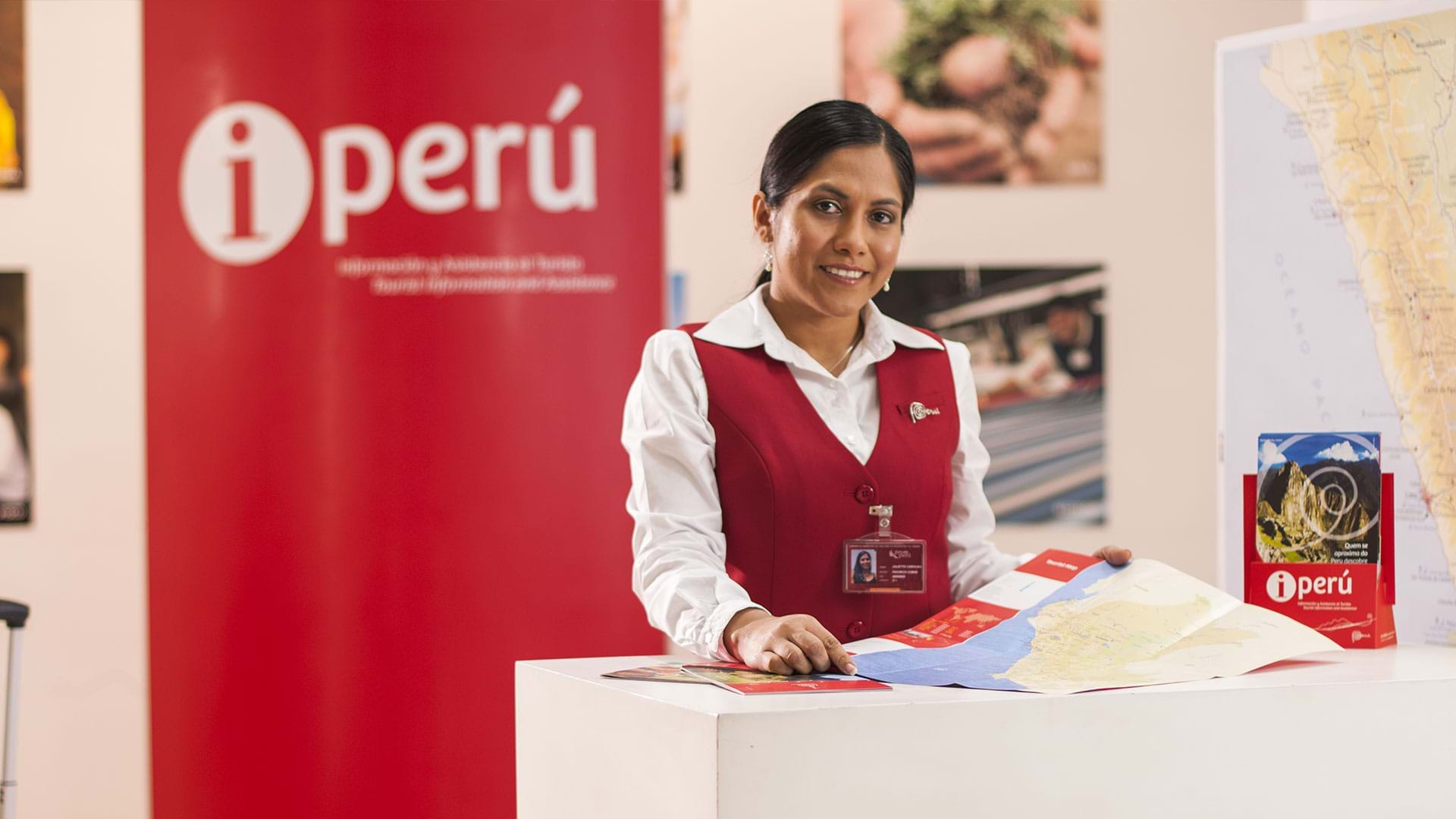
- Visa and entry requirements
Citizens of Argentina, Brazil, Paraguay, Uruguay, Ecuador, Colombia, Bolivia and Chile may enter the country with their national identity document.
iPeru offices Credit: Yayo López / PromPerú
- Useful information
- Dealing with emergencies
- Local security
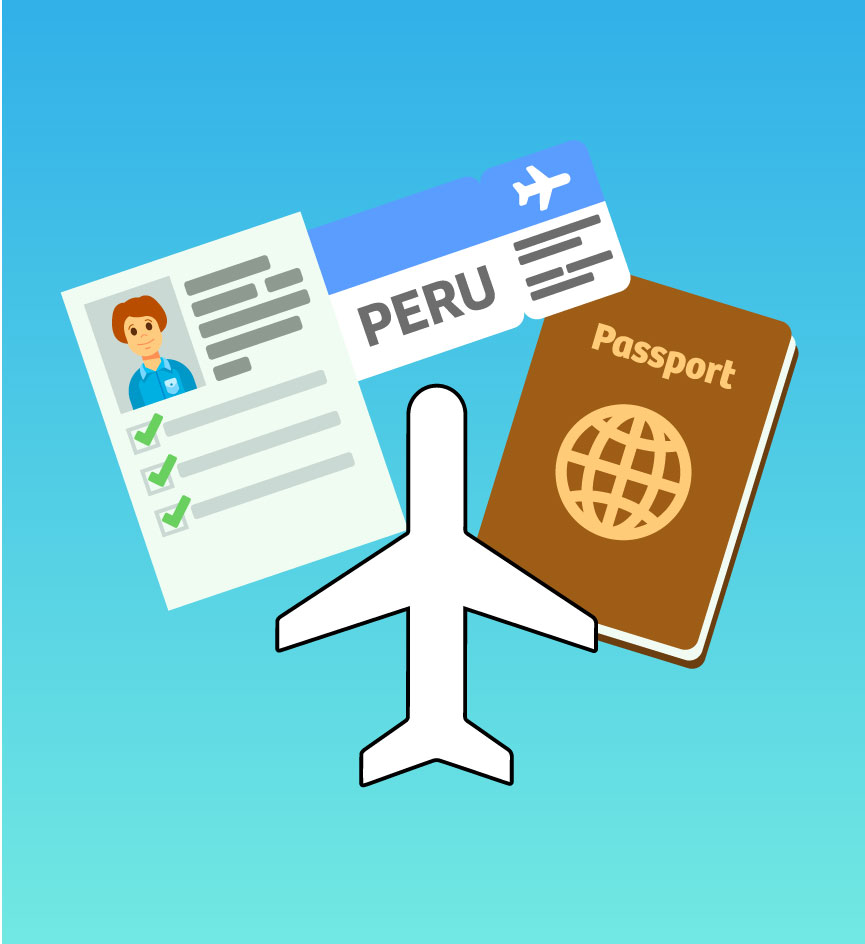
Foreign nationals who wish to enter and/or leave Peruvian territory must present the following:
Citizens of U.S., Canada, United Kingdom of Great Britain and Ireland, and Australia, do not need a Peruvian tourist visa. However, they do need to apply for a business visa to be legally able to enter into contracts or agreements.
They need a passport legitimately issued by a country with a minimum validity of six months from the date of entry into the country.
The maximum length of stay that the authorities grant is 90 days, which cannot be extended.
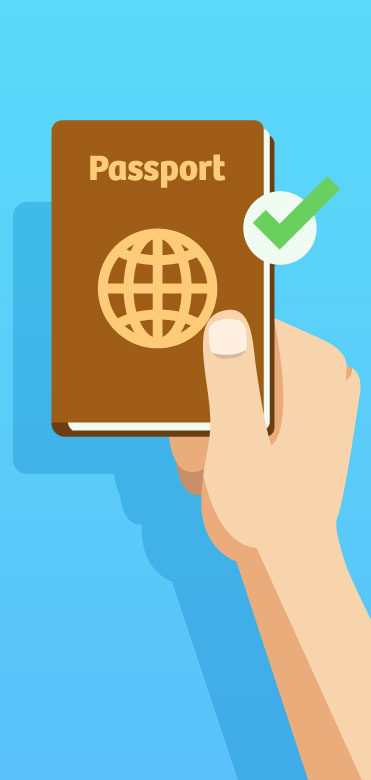
A travel document or Laissez Passer legitimately issued by a country or relating to international treaties and conventions to which Peru is a signatory, for humanitarian reasons.
A valid letter of safe-conduct, legitimately issued by a country and only in exceptional cases as established in international treaties and conventions to which Peru is a signatory, or when approved by the country that issued the letter of safe-conduct, provided that the conditions have been recognized and accepted by the Peruvian authorities. A valid travel document issued by the Peruvian Immigration Department is also valid.
A travel document for refugees and asylum seekers issued by Peru or another country within the framework of the international treaties and conventions to which Peru is a signatory.
Other valid travel documents, conforming to international treaties and conventions to which Peru is a signatory and which regulate and define the circumstances in which they will apply.

Migrations web page

Call (+511) 200 1000
If you wish to stay longer for other reasons, such as business, studying or working, you need to request the relevant visa at a Peruvian consulate or embassy in your own country.

Directory of Peruvian Consulates Abroad

Directory of Peruvian Embassies Abroad
To know if you need a visa, click here.

In accordance with Peruvian customs regulations, all new and used articles that a traveler may reasonably require for his or her own use or consumption, and that due to their nature, quantity and type do not appear to be for commercial use, are exempt from duty.
For more information, see the list of exempt goods here.
When entering Peru, a traveler must correctly complete the Baggage Declaration if he or she has articles or goods to declare. All articles that are subject to tax must be listed.
What are the visa requirements for visiting Peru?

Dec 14, 2023 • 3 min read
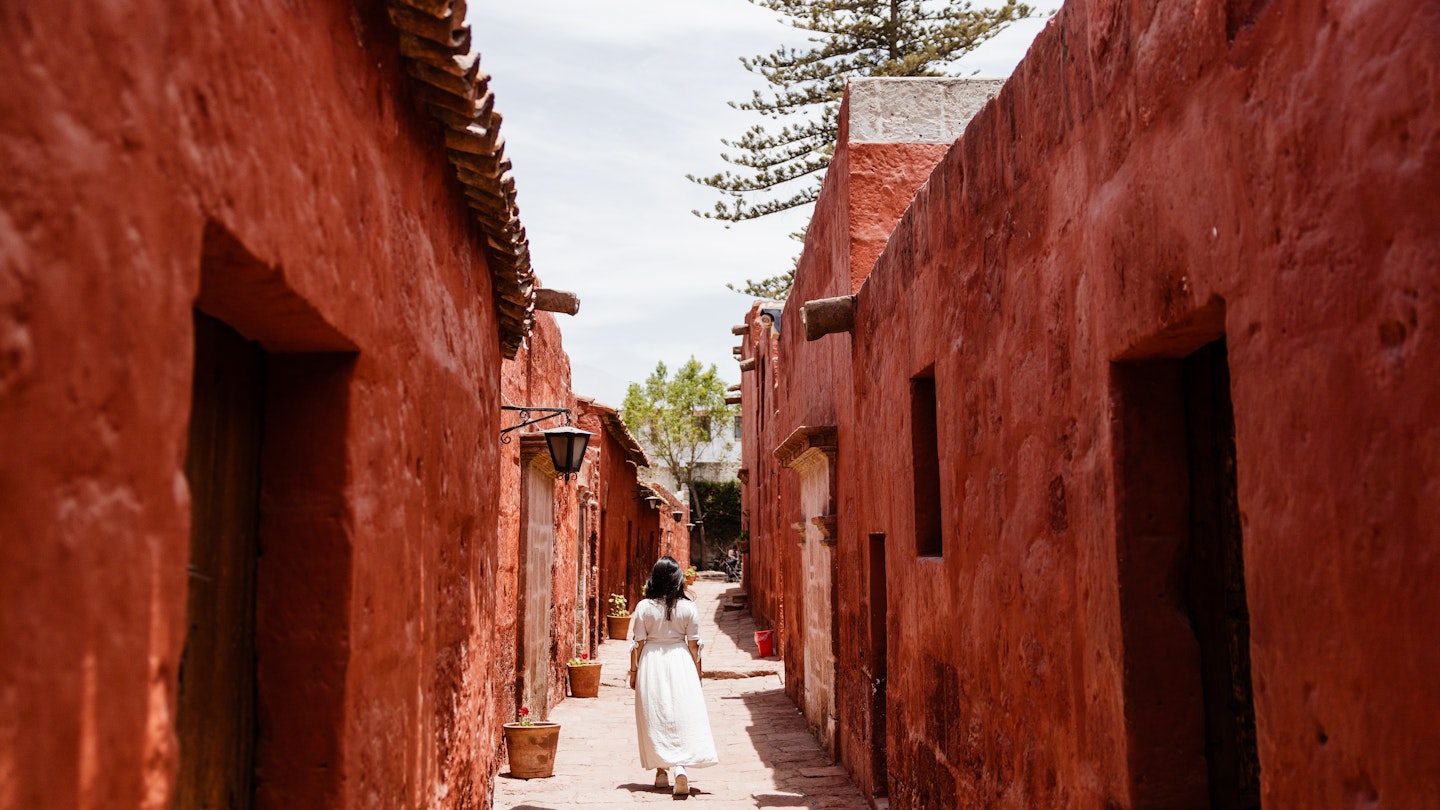
Not sure if you need a visa to visit Peru? We're here to help © Adriana Samanez / 500px / Getty Images
Home to one of the most-visited archaeological sites in the world, diverse ecosystems and a gastronomic scene that’s been booming for over a decade, it’s not difficult to come across a traveler with Peru on their bucket list — or one who has already crossed it off.
If you're one of the former, keep in mind that some prep work is involved. While many citizens of the world can visit the Andean nation without much more than an up-to-date passport, citizens of more than a few countries will require a visa to visit Peru.
To ease your mind and your travels, we’ve gathered some of the top questions regarding Peru visa requirements and visitor permits.
Who can visit Peru without a visa?
Travelers from North America , South America (with the exception of Venezuela), the European Union and Oceania can visit Peru visa-free, as can a few other select countries, including South Africa . Even quite a few citizens from South American countries can enter Peru just by showing their national identity documents.
Check this document from Peru’s Ministry of Foreign Affairs to see if you need a visa based on your nationality.
Even if you can enter Peru visa-free, visitors must have a valid passport for at least another six months upon arrival.
Every visitor to the country via the Jorge Chavez International Airport in Lima receives The Andean Migration Card (TAM). The card, which can be obtained in person or virtually, includes passport and ticket information, along with a fingerprint and photo.
TAM serves as a replacement for a passport stamp which, as of May 2023, travelers to Peru no longer receive.
Travelers are typically granted a 90-day permit in Peru, though that number can dip as low as 30 and reach a maximum of 183. It depends on the border official who receives you in migrations.
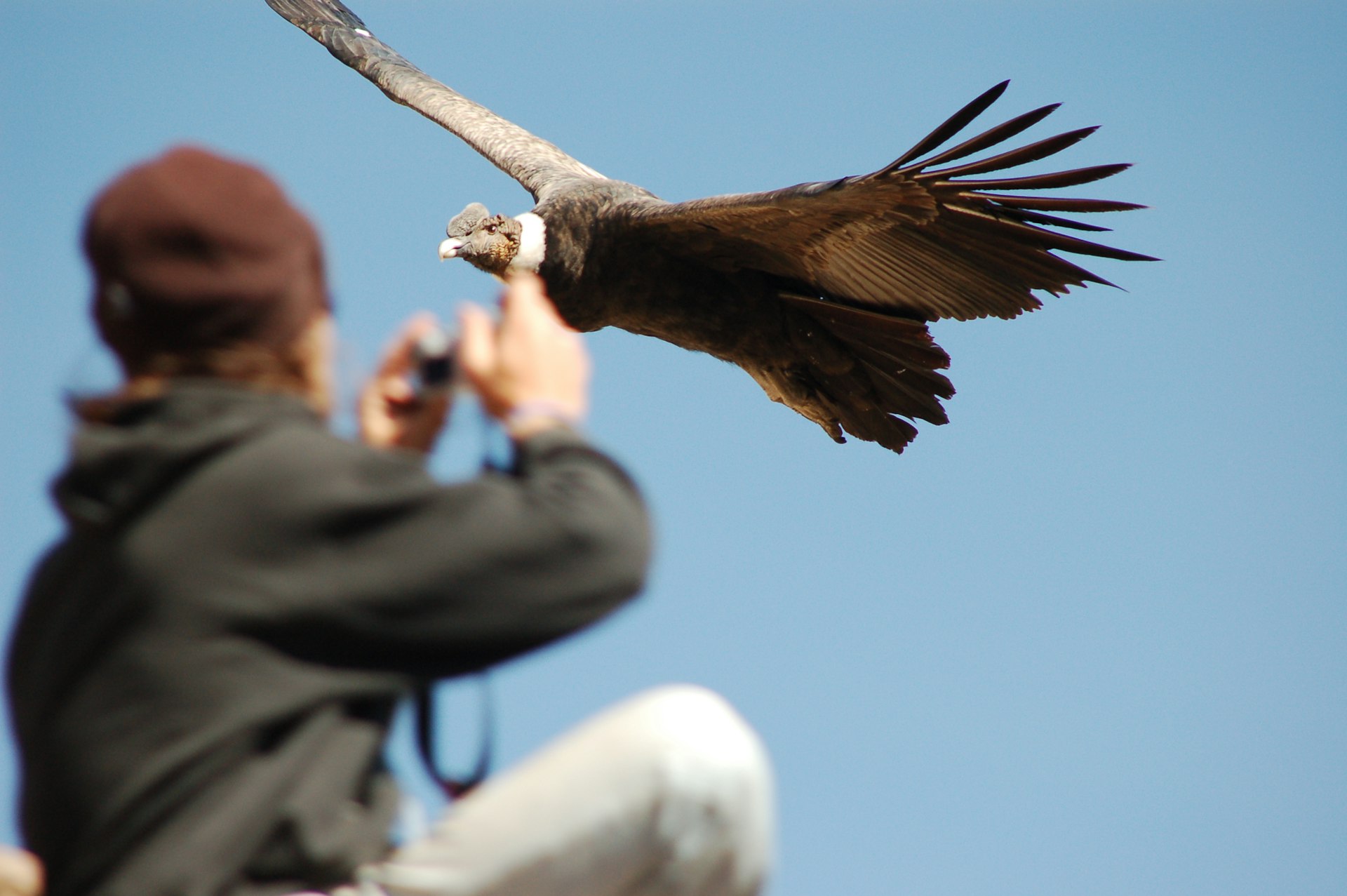
What happens if you overstay in Peru?
Since the country is packed with incredible places to visit in every region , visitors can easily find reasons to extend their vacation. But remember, there’s an S/4.40 per charge for every extra day over your tourist permit. The accrued debt must be paid in cash at the airport before departure.
Can you extend your stay in Peru?
Tourists can stay in Peru for a maximum of 183 days in one calendar year. For permits less than 183 days, you can visit an immigration office in any major Peruvian city to request an extension. The request must come before the visitor permit expires. Only tourist visas under 183 days will be considered.
How can I get a visa to visit Peru?
If you require a visa to visit Peru, you can apply for a Tourist Visa or a Business Visa. To apply, visit a Peruvian consulate or embassy in your country well in advance of your planned trip. Locate the nearest office here .
Both visa types cost about S/112. In general, tourist visa requirements include a passport with a 6-month validity minimum, a round-trip flight itinerary, hotel reservations and proof of financial solvency.
This article was first published August 2021 and updated December 2023
Explore related stories
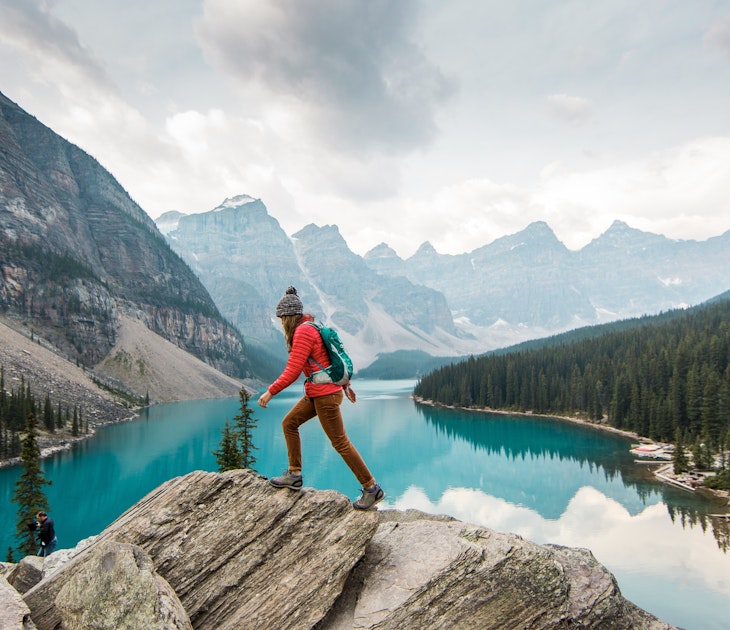
Destination Practicalities
Apr 11, 2024 • 6 min read
First-time visitors will benefit from these tips on planning, etiquette and health and safety as they plan their trips to Canada.

Mar 30, 2024 • 4 min read

Mar 26, 2024 • 6 min read

Mar 19, 2024 • 6 min read

Mar 10, 2024 • 5 min read

Mar 2, 2024 • 8 min read
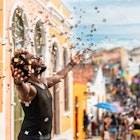
Mar 1, 2024 • 9 min read
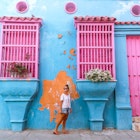
Feb 29, 2024 • 9 min read

Feb 27, 2024 • 6 min read

Feb 20, 2024 • 17 min read
Situation in Haiti April 13, 2024
U.s. citizens in haiti, update april 12, 2024, information for u.s. citizens in the middle east.
- Travel Advisories |
- Contact Us |
- MyTravelGov |
Find U.S. Embassies & Consulates
Travel.state.gov, congressional liaison, special issuance agency, u.s. passports, international travel, intercountry adoption, international parental child abduction, records and authentications, popular links, travel advisories, mytravelgov, stay connected, legal resources, legal information, info for u.s. law enforcement, replace or certify documents.
Before You Go
Learn About Your Destination
While Abroad
Emergencies
Share this page:
Travel Advisory November 15, 2023
Peru - level 2: exercise increased caution.
Last Update: Reissued with updates to crime information.
Exercise increased caution due to crime, civil unrest, and the possibility of kidnapping . Some areas have increased risk. Read the entire Travel Advisory.
Do not travel to:
- The Colombian-Peruvian border area in the Loreto Region due to crime .
- The Valley of the Apurímac, Ene, and Mantaro Rivers (VRAEM), including areas within the Departments of Ayacucho, Cusco, Huancavelica, and Junin, due to crime and terrorism .
Country Summary : Crime, including petty theft, carjackings, muggings, assaults, and other violent crime, is common in Peru and can occur during daylight hours despite the presence of many witnesses. Kidnapping is rare, but does occur. The risk of crime increases at night. Organized criminal groups have been known to use roadblocks to rob victims in areas outside of the capital city of Lima.
Demonstrations occur regularly throughout the country. Public demonstrations can take place for a variety of political and economic issues. Demonstrations can cause the shutdown of local roads, trains, and major highways, often without prior notice or estimated reopening timelines. Road closures may significantly reduce access to public transportation and airports and may disrupt travel both within and between cities.
U.S. travelers participating in Ayahuasca and Kambo ceremonies should be aware that numerous persons, including U.S. citizens, have reported that while under the influence of these substances, they have witnessed or been victims of sexual assault, rape, theft, serious health problems and injuries, and even death.
Currently, U.S. government personnel cannot travel freely throughout Peru for security reasons . Read the country information page for additional information on travel to Peru.
If you decide to travel to Peru:
- Be aware of your surroundings.
- Monitor local media for breaking events and adjust your plans as needed.
- Enroll in the Smart Traveler Enrollment Program ( STEP ) to receive Alerts and make it easier to locate you in an emergency.
- Follow the Department of State on Facebook and Twitter .
- Follow the U.S. Embassy on Facebook and Twitter .
- Review the U.S. Embassy webpage .
- Review the Country Security Report for Peru.
- Prepare a contingency plan for emergency situations. Review the Traveler’s Checklist .
- Visit the CDC page for the latest Travel Health Information related to your travel.
Colombian-Peruvian border area in the Loreto Region – Level 4: Do Not Travel
Drug trafficking and other criminal activity, combined with poor infrastructure, limits the capability and effectiveness of Peruvian law enforcement in this area.
The U.S. government has limited ability to provide emergency services to U.S. citizens as U.S. government personnel are restricted from traveling within 20 kilometers of the border with Colombia in the Loreto region, except on the Amazon River itself, without permission. This includes travel on the Putumayo River, which forms most of the Peru-Colombia border.
U.S. government personnel must receive advance permission for any travel to the Peruvian-Colombian border.
Valley of the Apurímac, Ene, and Mantaro Rivers (VRAEM) includes areas within the Departments of Ayacucho, Cusco, Huancavelica, and Junin – Level 4: Do Not Travel
Remnants of the Shining Path terrorist group are active in the VRAEM. The group may attack with little or no warning, targeting Peruvian government installations and personnel.
Drug trafficking and other criminal activity, combined with poor infrastructure, limit the capability and effectiveness of Peruvian law enforcement in this area.
U.S. government personnel are restricted from traveling in the VRAEM except for certain areas during daylight hours. U.S. government personnel must receive advance permission for any travel to the VRAEM. The U.S. government has limited ability to provide emergency services to U.S. citizens due to these travel restrictions.
Visit our website for Travel to High-Risk Areas .
Embassy Messages
View Alerts and Messages Archive
Quick Facts
Must have six months validity at time of entry.
One page required for entry stamp.
Free, issued at the port of entry.
None Required.
$30,000 USD. More than $10,000 USD must be declared upon entry.
Same as entry.
Embassies and Consulates
U.S. Embassy Lima Avenida La Encalada cdra. 17 s/n Surco, Lima 33 Peru Telephone: + (51)(1) 618-2000 Emergency After-Hours Telephone: + (51)(1) 618-2000 Fax: + (51) (1) 618-2724 Email: [email protected]
U.S. Consular Agency - Cusco Av. El Sol 449, Suite #201 Cusco, Peru Telephone: + (51)(84) 231-474 Emergency After-Hours Telephone: + (51)(1) 618-2000 Fax: + (51)(84) 245-102
Email: [email protected]
Destination Description
See the Department of State’s Fact Sheet on Peru for information on U.S.-Peru relations.
Entry, Exit and Visa Requirements
COVID-19 Requirements
- There are no COVID-related entry requirements for U.S. citizens.
Requirements for Entry :
- A passport with six months validity is required to enter Peru. Migraciones (Immigration) authorities may also require evidence of return/onward travel.
- Be sure your date and place of entry is officially documented by Migraciones, whether you arrive at a port, airport, or land border.
- Your length of approved stay will be determined by border officials at the time of entry, and can range from 30 to 183 days. Extensions for tourists are usually not approved, and overstays result in fines.
- The Embassy is unable to assist if you are denied entry. Peruvian immigration requires airlines to return travelers who are denied entry to their point of origin.
Requirements for Exit :
- If you do not have an entry record, you will not be allowed to exit the country until immigration authorities confirm the time and place of your entry into the country. This can be a difficult process, costing considerable time and money to resolve.
- Make sure Migraciones (Immigration) records your entry, and then save the record for your exit. An entry record is required even at remote border crossings, where often the proper officials are not present.
- Immediately report lost/stolen passports to local police and keep the report. You must apply for a new passport at the Embassy and obtain a replacement entry record from Migraciones using your police report prior to exiting Peru.
Travel with Minors : Regardless of nationality, all children who are traveling with both birth parents are required to have a valid passport and the necessary visa or citizenship of the country where they are traveling. Peruvian immigration procedures are complex for minors traveling without one or both parents/legal guardians.
For entry/exit from Peru, U.S. citizen minors under the age of 18, traveling alone (or with only one parent), generally do not require additional documentation if entering as a tourist for less than 183 days. However, if the stay lasts more than 183 days, then a Permiso Notarial de Viaje is required (see below).
U.S. citizen minors who are dual national Peruvians, traveling alone (or with only one parent), require a Permiso Notarial de Viaje. Furthermore, step-parents or guardians accompanying a dual U.S.-Peruvian citizen minor must provide a Permiso Notarial de Viaje from the non-traveling minor’s parents (as listed on the birth certificate). Finally, if an accompanying parent has sole custody, legal documentation is required (such as a foreign court-approved custody document stating sole custody, a death certificate, a Peruvian court-approved document for travel, or a birth certificate listing only one parent).
A Permiso Notarial de Viaje is a written, notarized authorization from the non-traveling parent(s). Peruvian immigration will not accept a document notarized by the U.S. Embassy or a document notarized by a U.S. notary in lieu of a Permiso Notarial de Viaje. Please be aware that these authorizations are valid for 30 days and one trip only.
How to get a Permiso Notarial de Viaje:
- In the United States, at the nearest Peruvian Consulate. There are multiple locations .
- In Peru, at most Peruvian notaries. An apostilled U.S. birth certificate is required for issuance.
The U.S. Embassy is unable to assist travelers who are prevented from traveling for lack of a Permiso Notarial de Viaje.
HIV Restrictions : The U.S. Department of State is unaware of any HIV/AIDS entry restrictions for visitors to, or foreign residents of, Peru.
Find information on dual nationality , prevention of international child abduction , and customs regulations on our websites.
Safety and Security
Terrorism: Terrorist groups and those inspired by such organizations are intent on attacking U.S. citizens abroad. Terrorists are increasingly using less sophisticated methods of attack – including knives, firearms, and vehicles – to more effectively target crowds. Frequently, their aim is unprotected or vulnerable targets, such as:
- High-profile public events (sporting contests, political rallies, demonstrations, holiday events, celebratory gatherings, etc.)
- Hotels, clubs, and restaurants frequented by tourists
- Places of worship
- Schools
- Parks
- Shopping malls and markets
- Public transportation systems (including subways, buses, trains, and scheduled commercial flights)
U.S. Embassy Lima enforces a Restricted Travel Policy for Embassy personnel, which is based on its assessment of conditions and developments throughout the country. See the Overseas Security and Advisory Council’s Country Security Report for Peru. See the latest Travel Advisory for Peru .
The VRAEM (Valley of the Apurímac, Ene, and Mantaro Rivers) is particularly remote and a known safe haven for narcotraffickers and the last operational remnants of the Shining Path terrorist group.
For more information, see our Terrorism page.
Crime : Crime is a widespread problem in Peru.
- Sexual assaults and rapes can occur, even in tourist areas. Travel in groups, do not leave food or drinks unattended, and use caution if a stranger offers you food or drink.
- Intoxicated travelers, including U.S. citizens, also have been sexually assaulted, injured, or robbed while under the influence of drugs and alcohol.
- Pick-pocketing, robbery, and hotel room theft are the most common crimes. Armed robberies have occurred throughout the city, including popular tourist destinations. Armed assailants usually target victims for their smartphones, wallets, or purses. If confronted by someone with a weapon, it is best not to resist.
- Incapacitating drugs, such as rohypnol and scopolamine, have been used to facilitate robberies and sexual assaults. Seek medical attention if you begin to feel ill.
- On routes to and from the airport in Lima, robberies have occurred where the assailant uses a tool to break a window while the vehicle is stopped in traffic. Keep your belongings in the trunk or out of sight. Authorized taxi booths are present at the airport in Lima that will charge a flat rate according to the destination.
- Use hotel safes, if available. Avoid wearing obviously expensive jewelry or clothing, and carry only the cash or credit cards that you need.
- Stay alert in crowds and on public transportation. Be aware that thieves might create distractions to target you.
- Avoid isolated areas when on foot, especially after dark.
- Be alert for robberies in which criminals enter a taxi and force victims to withdraw money from ATMs.
- Use an app-based taxi service, order a taxi by phone, or use a service affiliated with a major hotel, as it is usually safer than hailing an unknown taxi on the street.
- Use ATMs in well-protected indoor areas such as banks or shopping malls. Avoid withdrawing large amounts of cash at one time.
- Do not let your credit card out of your sight in order to avoid credit card “skimming.” You should expect the vendor to use a credit card reader in your presence. The vendor will ask for your passport or ID number on the receipt.
- To avoid carjacking or theft from your car while you are stopped at intersections, drive with your doors locked and windows rolled up. Do not leave valuables in plain view.
There is little government presence in many remote areas of the Andes and Amazon basin. Illicit activities, such as illegal mining, logging, and coca production, are common.
Drug trafficking and other criminal activity, combined with poor infrastructure, limit the capability and effectiveness of Peruvian law enforcement in these areas.
The U.S. government has limited ability to provide emergency services to U.S. citizens along the Colombian border and in the VRAEM, as U.S. government personnel are restricted from traveling in these regions.
Demonstrations occur frequently. They may take place in response to political or economic issues, on politically significant holidays, and during international events.
- Demonstrations can be unpredictable; avoid areas around protests and demonstrations.
- Past demonstrations have turned violent.
- Check local media for updates and traffic advisories.
International Financial Scams: See the Department of State and the FBI pages for information.
Financial scams are prevalent in Peru. Scams are often initiated through Internet postings/profiles or by unsolicited emails and letters. Scammers almost always pose as U.S. citizens who have no one else to turn to for help. Common scams include:
- Money transfers
- Grandparent/Relative targeting
Victims of Crime : U.S. citizen victims of sexual assault are encouraged to contact the U.S. Embassy for assistance. Report crimes to the local police and contact the U.S. Embassy in Lima. Remember that local authorities are responsible for investigating and prosecuting crime.
- U.S. Embassy: +51-1-618-2000 (phone is answered 24 hours a day, seven days a week)
- Local police: 105 (National Police)
- Tourist Police: 0800-22221
- IPeru: 01-574-8000 (a tourist information service that has English-speaking personnel)
See our webpage on help for U.S. victims of crime overseas .
- Help you find appropriate medical care.
- Assist you with reporting a crime to the police.
- Contact relatives or friends with your written consent.
- Provide general information regarding the victim’s role during the local investigation and following its conclusion.
- Provide a list of local attorneys.
- Provide information on victims’ compensation programs in the United States .
- Provide information on assistance programs for victims of crime in Peru .
- Provide an emergency loan for repatriation to the United States and/or limited medical support in cases of destitution.
- Help you find accommodation and arrange flights home.
- Replace a stolen or lost passport.
Domestic Violence : U.S. citizen victims of domestic violence are encouraged to contact the Embassy for assistance. Telephone (answered 24 hours): +51-1-618-2000
Tourism : The tourism industry, including adventure activities (e.g. paragliding, sandboarding, etc.), is unevenly regulated, and safety inspections for equipment and facilities do not commonly occur. Hazardous areas/activities are not always identified with appropriate signage, and staff may not be trained or certified either by the host government or by recognized authorities in the field. U.S. citizens are encouraged to pay attention to waiver and liability policies of tour companies, as they may vary or not exist. In the event of an injury, appropriate medical treatment is typically available only in/near major cities. First responders are generally unable to access areas outside of major cities and to provide urgent medical treatment. U.S. citizens are encouraged to purchase medical evacuation insurance .
Local Laws & Special Circumstances
Criminal Penalties : You are subject to local laws. If you violate local laws, even unknowingly, you may be expelled, arrested, or imprisoned. Individuals establishing a business or practicing a profession that requires additional permits or licensing should seek information from the competent local authorities prior to practicing or operating a business.
Ayahuasca/Kambo/Hallucinogens: Traditional hallucinogens, often referred to as ayahuasca or kambo, are often marketed to travelers as “ceremonies” or “spiritual cleansing,” and typically contain dimethyltryptamine (DMT), a strong hallucinogen that is illegal in the United States and many other countries.
- Intoxicated travelers, including U.S. citizens, have been sexually assaulted, injured, or robbed while under the influence of these substances.
- Health risks associated with ayahuasca are not well understood, and, on occasion, U.S. citizens have suffered serious illness or death after taking these drugs.
- These incidents often occur in remote areas and far away from modern medical facilities, making the risks even greater.
- Penalties for possessing, using, or trafficking in illegal drugs in Peru are severe.
- Offenders can expect long pre-trial detention and lengthy prison sentences under harsh conditions with significant expense for themselves and/or their families.
- Never agree to carry a suitcase or package through customs for anyone.
- Peru uses strict screening procedures for detecting narcotics smuggling at its international airports.
Customs Currency Regulations :
- $30,000 USD or its equivalent in cash or negotiable items is the maximum allowed for entry or exit.
- Any amount in excess of $10,000 USD must be declared and the legal source proven.
Artifacts :
- Peruvian law forbids the export of pre-Columbian objects and other artifacts protected by cultural patrimony statutes.
- U.S. customs officials are required to seize pre-Columbian objects and certain colonial religious artwork brought into the United States.
Animal Products/Plants :
- Avoid products made of wild plants and animals, as many are of illegal origin and may involve protected or endangered species, whose sale and export are illegal.
- Peruvian authorities will seize any protected species that is sold or transported, either live or transformed into food, medicinal beverages, leather, handcrafts, garments, etc.
- Some products, including live animals, require special permits when leaving Peru.
- Knowingly importing into the United States wildlife or plants that were taken from the wild or sold in violation of the laws of Peru (or any other country) is a violation of the Lacey Act (16 USC § 3371).
Furthermore, some laws are also prosecutable in the United States, regardless of local law. For examples, see our website on crimes against minors abroad and the Department of Justice website.
Arrest Notification : If you are arrested or detained, ask police or prison officials to notify the U.S. Embassy immediately. See our webpage for further information.
Special Circumstances : Many popular destinations in Peru are remote. These areas have few facilities that are able to provide advanced or emergency medical care.
- Local rescue capabilities are severely limited. Many mountain areas are too high for helicopters to reach safely. Accidents or injuries while hiking or climbing are common; crisis responders may take hours or even days to reach you if they are traveling over great distances and/or rough terrain.
- When using tourist company services, travelers are encouraged to use qualified and licensed operators. Many do not meet international safety standards. Inquire about safety standards prior to engaging in adventure activities. The Ministerio de Comercio Exterior y Turismo (Tourism Ministry) website provides information on tourism companies.
- Always check with local authorities before traveling about local geographic, climatic, health, and security conditions that may impact your safety.
- Be aware that you may not have access to phone or internet for days at a time. Check in with family prior to going to remote areas and leave detailed written plans and timetables. Use of a personal GPS beacon is encouraged.
Seismic Activity : Earthquakes are common throughout Peru. On May 26, 2019, a magnitude 8.0 earthquake struck the Loreto region of Peru. One fatality in the Cajamarca region and 11 injuries as well as isolated power outages and some infrastructure damage were reported.
- Visit Peru’s National Emergency Operations Center (COEN) for more information.
- In the event of a natural disaster, monitor local media and government agencies, including IPeru , the Commission to Promote Peru for Exports and Tourism (PROMPERU) , and Peru’s National Meteorology and Hydrology Service (SENAMHI) for updates.
- WhatsApp: IPeru +51-944-492-314
- Twitter: @Promperu @COENPeru @SENAMHIPeru @Sismos_Peru_IGP
- Visit the U.S. Centers for Disease Control and Prevention website for information on emergency preparedness and response.
Legal Issues in Peru :
- The legal system in Peru may require victims or their families to hire lawyers to advance their cases through the legal system, even for victims of serious crimes.
- U.S. citizens have reported unethical practices by lawyers and others, resulting in costly losses and little hope of remedy through the local judicial system.
- Peruvian laws are subject to change with little notice . The Peruvian government publishes little information in English. The U.S. Embassy cannot give detailed advice about Peruvian law.
Counterfeit and Pirated Goods : Although counterfeit and pirated goods are prevalent in many countries, they may still be illegal according to local laws. You may also pay fines or have to give them up if you bring them back to the United States. See the U.S. Department of Justice website for more information.
Faith-Based Travelers : See the following webpages for details:
- Faith-Based Travel Information
- International Religious Freedom Report – see country reports
- Human Rights Report – see country reports
LGBTQI+ Travelers : There are no legal restrictions on same-sex sexual relations or the organization of LGBTI events in Peru.
See our LGBTQI+ Travel Information page and section 6 of our Human Rights report for further details.
Travelers with Disabilities: Peruvian law prohibits discrimination against persons with physical and mental disabilities, and the law is enforced. Social acceptance of persons with disabilities in public is as prevalent as in the United States. The most common types of accessibility may include ramps, special cashiers for those with disabilities, and elevators. Expect accessibility to be limited in public transportation, and common in lodging, communication/information, and general infrastructure. There is a significant difference between Lima (and other large cities) and the rest of the country.
- Rental, repair, and replacement services are available for aids/equipment/devices.
- The Ministry of Foreign Affairs has a list of translators .
Students : See our Students Abroad page and FBI travel tips .
Women Travelers : See our travel tips for Women Travelers .
COVID-19 Testing:
- PCR and/or antigen tests are available for U.S. citizens in Peru, and test results are reliably available within one calendar day.
- Peru is able to test for COVID-19 in country. Private hospitals and laboratories as well as the Peruvian Ministry of Health (MINSA) are administering tests.
- U.S. citizens are responsible for their own COVID-19 testing costs.
COVID-19 Vaccines:
The COVID-19 vaccine is available for U.S. citizens to receive in Peru. Visit the FDA's website to learn more about FDA-approved vaccines in the United States.
- Pfizer-BioNTech, Moderna, AstraZeneca, and Sinopharm vaccines are available in Peru.
- For more information about the Peruvian Ministry of Health’s (MINSA) national vaccine strategy, see (in Spanish) MINSA's website .
Medical Care :
- Specialized medical care can cost tens of thousands of dollars, and you are expected to pay in full at the time of discharge.
- Pharmacies are widely available. However, some medications might not be offered, and brand names will differ from products in the United States.
- Exercise caution if you explore herbal and folk remedies.
For emergency services in Peru, dial 113 .
Ambulance services are not present throughout the country or are unreliable in most areas except Lima and other major cities. Training and availability of emergency responders may be below U.S. standards. Injured or seriously ill travelers may prefer to take a taxi or private vehicle to the nearest major hospital rather than wait for an ambulance.
We do not pay medical bills . Be aware that U.S. Medicare/Medicaid does not apply overseas. Most hospitals and doctors overseas do not accept U.S. health insurance.
Medical Insurance : Make sure your health insurance plan provides coverage overseas. Most care providers overseas only accept cash payments. See our webpage for more information on insurance overseas. Visit the U.S. Centers for Disease Control and Prevention for more information on type of insurance you should consider before you travel overseas.
We strongly recommend supplemental insurance to cover medical evacuation.
Always carry your prescription medication in original packaging, along with your doctor’s prescription. Check with the Government of Peru to ensure the medication is legal in Peru.
Vaccinations : Be up-to-date on all vaccinations recommended by the U.S. Centers for Disease Control and Prevention.
Further health information :
- World Health Organization
- U.S. Centers for Disease Control and Prevention (CDC)
Air Quality : Visit AirNow Department of State for information on air quality at U.S. Embassies and Consulates.
The U.S. Embassy maintains a list of doctors and hospitals . We do not endorse or recommend any specific medical provider or clinic.
Health Facilities in General:
- Adequate health facilities are available in Lima and other major cities, but health care in rural areas may be below U.S. standards.
- Public medical clinics lack basic resources and supplies.
- Hospitals and doctors often require payment “up front” prior to service or admission. Credit card payment is usually available. Some hospitals and medical professionals require cash payment.
- Private and public hospitals usually require advance payment or proof of adequate insurance before admitting a patient.
- Travelers should make efforts to obtain complete information on billing, pricing, and proposed medical procedures before agreeing to any medical care.
- Medical staff may speak little or no English.
- Generally, in public hospitals only minimal staff is available overnight in non-emergency wards.
- Patients bear all costs for transfer to or between hospitals if they do not have insurance.
- Psychological and psychiatric services are limited, even in the larger cities, with hospital-based care only available through government institutions.
Medical Tourism and Elective Surgery :
- U.S. citizens have suffered serious complications or died during or after having cosmetic or other elective surgery.
- Medical tourism is a rapidly growing industry. People seeking health care overseas should understand that medical systems operate differently from those in the United States and are not subject to the same rules and regulations. Anyone interested in traveling for medical purposes should consult with their local physician before traveling and visit the U.S. Centers for Disease Control and Prevention website for information on Medical Tourism, the risks of medical tourism, and what you can do to prepare before traveling to Peru.
- We strongly recommend supplemental insurance to cover medical evacuation in the event of unforeseen medical complications.
- Your legal options in case of malpractice are very limited in Peru.
- Although Peru has many elective/cosmetic surgery facilities that are on par with those found in the United States, the quality of care varies widely. If you plan to undergo surgery in Peru, make sure that emergency medical facilities are available and professionals are accredited and qualified.
Pharmaceuticals:
- Exercise caution when purchasing medication overseas. Pharmaceuticals, both over the counter and requiring prescription in the United States, are often readily available for purchase with little controls. Counterfeit medication is common and may prove to be ineffective, the wrong strength, or contain dangerous ingredients. Medication should be purchased in consultation with a medical professional and from reputable establishments.
- U.S. Customs and Border Protection and the Food and Drug Administration are responsible for rules governing the transport of medication back to the United States. Medication purchased abroad must meet their requirements to be legally brought back into the United States. Medication should be for personal use and must be approved for usage in the United States. Please visit the U.S. Customs and Border Protection and the Food and Drug Administration websites for more information.
Please review Peru's rules on medication .
Non-Traditional Medicine:
- U.S. citizens have suffered serious complications or died while seeking medical care from non-traditional “healers” and practitioners in Peru. Ensure you have access to licensed emergency medical facilities in such cases.
Assisted Reproductive Technology and Surrogacy :
- If you are considering traveling to Peru to have a child through use of assisted reproductive technology, please see our ART and Surrogacy Abroad page .
- Surrogacy is illegal for foreigners in Peru, subject to complex local regulation.
- If you decide to pursue parenthood in Peru via assisted reproductive technology (ART) with a gestational mother, be prepared for long and unexpected delays in documenting your child’s citizenship. Be aware that individuals who attempt to circumvent local law risk criminal prosecution.
Water Quality:
- In many areas, tap water is not potable. Bottled water and beverages are generally safe, although you should be aware that many restaurants and hotels serve tap water unless bottled water is specifically requested. Be aware that ice for drinks may be made using tap water.
- Many cities in Peru, such as Puno, Cusco, Arequipa, Ayacucho, and Huaraz, are at high altitude. Be aware of the symptoms of altitude sickness, and take precautions before you travel. Visit the U.S. Centers for Disease Control and Prevention website for more information about Travel to High Altitudes .
Adventure Travel:
- Visit the U.S. Centers for Disease Control and Prevention website for more information about Adventure Travel .
General Health :
The following diseases are prevalent:
- Travelers’ Diarrhea
- Guillain-Barré Syndrome
- Hepatitis A and B
- Leishmaniasis
- Tuberculosis
- Yellow fever
Use the U.S. Centers for Disease Control and Prevention recommended mosquito repellents and sleep under insecticide-impregnated mosquito nets. Chemoprophylaxis is recommended for all travelers even for short stays.
HIV/AIDS: For more information visit MINSA’s website (in Spanish): https://www.dge.gob.pe/vih/ .
Visit the U.S. Centers for Disease Control and Prevention website for more information about Resources for Travelers regarding specific issues in Peru.
Air Quality:
- Air pollution is a significant problem in several major cities in Peru. Consider the impact seasonal smog and heavy particulate pollution may have on you and consult your doctor before traveling if necessary.
- Infants, children, and teen.
- People over 65 years of age.
- People with lung disease such as asthma and chronic obstructive pulmonary disease (COPD), which includes chronic bronchitis and emphysema.
- People with heart disease or diabetes.
- People who work or are active outdoors.
Travel and Transportation
Road Conditions and Safety : Driving conditions in Peru are very different from those found in the United States, and can be considerably more dangerous. Visitors are strongly encouraged to familiarize themselves with local law and driving customs before attempting to operate vehicles.
- Roads are often poorly maintained and may lack crash barriers, guard rails, signs, and streetlights.
- Fog is common on coastal and mountain highways, making conditions more treacherous.
- Slow-moving buses and trucks frequently stop in the middle of the road unexpectedly.
- Road travel at night is particularly hazardous. Due to safety concerns, U.S. Embassy personnel are prohibited from traveling on mountainous roads at night.
- Traveling in a group is preferable to solo travel. Spare tires, parts, and fuel are needed when traveling in remote areas, where distances between service areas are long.
Traffic Laws: Traffic laws are often ignored and rarely enforced, creating dangerous conditions for drivers and pedestrians.
- Seat belts are mandatory for driver and front-seat passengers in a private vehicle.
- It is against the law to talk on a cellular phone while driving, and violators may be fined.
- When driving in urban areas, taxis and buses often block lanes impeding traffic.
- Directional signals are often not used, and vehicles frequently turn from the middle through traffic lanes.
- While driving outside major cities and on the Pan-American Highway, you must drive with your lights on.
- Traffic officers must wear uniforms and identification cards that include their last name on their chest.
- Traffic officers are not allowed to retain your personal identification or vehicle documents.
- Under no circumstances should you offer or agree to pay money to traffic officers.
- If you are involved in an accident, you MUST contact local police and remain at the scene without moving your vehicle until the authorities arrive. This rule is strictly enforced, and moving a vehicle or leaving the scene of an accident may constitute an admission of guilt under Peruvian law.
- If your car is a rental, call the agency or representative of the insurance company provided by the rental agency.
- Always carry your driver's license, a copy of your passport, and the rental agreement when you drive a rental car.
- International driver's licenses are valid for one year, while driver's licenses from other countries are generally valid for 30 days.
Public Transportation : Many buses are overcrowded, poorly maintained, and lack safety features such as seat belts.
- Bus accidents resulting in multiple deaths and injuries are common due to routes along narrow, winding roads without a shoulder and steep drop-offs.
- Accidents are frequently attributed to excessive speed, poor bus maintenance, poor road conditions, and driver fatigue.
- Individuals should use private taxi companies or car-share applications when traveling as opposed to hailing taxis on the side of the road for safety.
See our Road Safety page for more information. Visit the website of Peru’s national tourist office and national authority responsible for road safety.
Aviation Safety Oversight : The U.S. Federal Aviation Administration (FAA) has assessed the government of Peru’s Civil Aviation Authority as being in compliance with International Civil Aviation Organization (ICAO) aviation safety standards for oversight of Peru’s air carrier operations. Further information may be found on the FAA’s safety assessment page .
Maritime Travel : Mariners planning travel to Peru should check for U.S. maritime advisories and alerts . Information may also be posted to the U.S. Coast Guard homeport website , and the NGA broadcast warnings .
For additional travel information
- Enroll in the Smart Traveler Enrollment Program (STEP) to receive security messages and make it easier to locate you in an emergency.
- Call us in Washington, D.C. at 1-888-407-4747 (toll-free in the United States and Canada) or 1-202-501-4444 (from all other countries) from 8:00 a.m. to 8:00 p.m., Eastern Standard Time, Monday through Friday (except U.S. federal holidays).
- See the State Department’s travel website for the Worldwide Caution and Travel Advisories .
- Follow us on Twitter and Facebook .
- See traveling safely abroad for useful travel tips.
Peru was cited in the State Department’s 2022 Annual Report to Congress on International Child Abduction for demonstrating a pattern of non-compliance with respect to international parental child abduction. Review information about International Parental Child Abduction in Peru . For additional IPCA-related information, please see the International Child Abduction Prevention and Return Act ( ICAPRA ) report.
Travel Advisory Levels
Assistance for u.s. citizens, learn about your destination, enroll in step.

Subscribe to get up-to-date safety and security information and help us reach you in an emergency abroad.
Recommended Web Browsers: Microsoft Edge or Google Chrome.
Make two copies of all of your travel documents in case of emergency, and leave one with a trusted friend or relative.
Afghanistan
Antigua and Barbuda
Bonaire, Sint Eustatius, and Saba
Bosnia and Herzegovina
British Virgin Islands
Burkina Faso
Burma (Myanmar)
Cayman Islands
Central African Republic
Cote d Ivoire
Curaçao
Czech Republic
Democratic Republic of the Congo
Dominican Republic
El Salvador
Equatorial Guinea
Eswatini (Swaziland)
Falkland Islands
France (includes Monaco)
French Guiana
French Polynesia
French West Indies
Guadeloupe, Martinique, Saint Martin, and Saint Barthélemy (French West Indies)
Guinea-Bissau
Isle of Man
Israel, The West Bank and Gaza
Liechtenstein
Marshall Islands
Netherlands
New Caledonia
New Zealand
North Korea (Democratic People's Republic of Korea)
Papua New Guinea
Philippines
Republic of North Macedonia
Republic of the Congo
Saint Kitts and Nevis
Saint Lucia
Saint Vincent and the Grenadines
Sao Tome and Principe
Saudi Arabia
Sierra Leone
Sint Maarten
Solomon Islands
South Africa
South Korea
South Sudan
Switzerland
The Bahamas
Timor-Leste
Trinidad and Tobago
Turkmenistan
Turks and Caicos Islands
United Arab Emirates
United Kingdom
Vatican City (Holy See)
External Link
You are about to leave travel.state.gov for an external website that is not maintained by the U.S. Department of State.
Links to external websites are provided as a convenience and should not be construed as an endorsement by the U.S. Department of State of the views or products contained therein. If you wish to remain on travel.state.gov, click the "cancel" message.
You are about to visit:
Language selection
Embassy of canada to peru, in lima.
We provide services to Canadians visiting and living in Peru.
Services and information
Adoption and surrogacy.
Process to adopt a child internationally and bring them back to Canada.
Birth abroad
Register a child's birth abroad.
Child abduction
Steps to take if your child is abducted in Canada or abroad.
Citizenship services
Steps to become a Canadian citizen. Get proof of citizenship.
Criminal record checks
How to get a criminal record check abroad, if required.
Death abroad
Steps to follow when a loved one dies abroad.
Divorce abroad
Information on divorce procedures while abroad.
Legal matters
Steps to take should you need legal help abroad.
Marriage abroad
Requirements, documents and processes for getting married abroad.
Notarial services
Have your documents certified and authenticated.
Passport services
Apply for a passport and what to do if your passport is lost, stolen or damaged.
Pensions and retirement
Information on pensions and retiring outside of Canada.
Same-sex marriage abroad
Country specific information on same-sex marriage.
Studying abroad
Information on education or research opportunities in foreign countries.
Visa and immigration services
Apply to immigrate. Get a visa to study, work or visit Canada.
Voting abroad
Voting process for Canadians who live abroad.
Office information
Calle Bolognesi 228, Miraflores, Lima 15074, Peru
Telephone: 51 (1) 319-3200
Fax: 51 (1) 446-4912
Email: [email protected]
Hours of operation:
Email: [email protected]
Telephone: 51 (1) 319-3200 #3341 / 3342
Website: IRCC web form
Our representative

Louis Marcotte Ambassador of Canada to Peru and Bolivia

- Embassy of Canada to Peru
Terms of service
X (Twitter)
- @CanadaPeru
- Embajada/ Emb/ Amb Canadá Perú
Office closures

- Experiences
- Destinations
- The Company
- Photo Gallery
- Travel to Peru From Canada: A Complete Guide

Peru is one of the most sought after options to travel in South America. The so-called Country of the Incas is recognized for its prevailing cultural expression, natural wonders, and historical attractions which fills it with countless adventures and mysteries for all ages and tastes. From the lush Peruvian jungle to the towering Andean mountains and the spellbinding coastal side, the Peruvian lands are a whole new world. For those looking to indulge their desire for meeting new places and disconnect from routine, Peru is the best destination. We are proud to say that our country offers different experiences for all types of travelers. Whether you’re looking to unwind your mind, look for spiritual guidance, exploring mountainous trails, or uncover the mysteries of Peru’s ancient civilizations, here you’ll find a new adventure in every corner. Therefore, we came up with this section to teach you the basics for planning your trip to Peru from Canada. We’ve answered the most frequently asked questions about travel planning to our country and added useful information regarding safety, transport, entry requirements, and more!
Is Peru safe for Canadian tourists?
Regardless of your nationality, Peru has developed a great tourism infrastructure. The famous Andean country receives over 4,4 million visitors per year , making it the 4th most visited country in South America. Likewise, crime in Peru has potentially decreased over the years though it is worth noting that as in every country, one must remain cautious and aware at all times. Petty crimes are a widespread problem in Peru, which is why we recommend to keep vigilant of your belongings and to stay in the cities’ touristy areas where the affluence of travelers is larger and national security is more compliant. Pick-pocketing and robberies are very common, be aware among crowds since thieves might create distractions to target you. However, we don’t mean to scare you off by pointing this out, but to show you the reality ahead when traveling abroad. That doesn’t mean that it could happen to you or that you’re traveling to a highly unsafe country, on the contrary, these are just precautions. In case of any inconvenience, there are government agencies specialized in tourism willing to assist you with any eventuality, such as the Tourist Police. The Tourist Police or Policía de Turismo in Spanish, is another wing of national security which provides assistance to foreign travelers, though it’s more likely to find them in larger cities rather than the most rural and remote areas of the country. However, the Embassy of Canada in Lima also offers assistance and guidance for crime victims. Remember to fill your report with local police and then contact your embassy if necessary. Local authorities are responsible for investigating and prosecuting crime.
How to get to Peru from Canada?
The easiest way to get to Peru from Canada is by international flight, fares can range from 300 CAD to 900 CAD (one way). Likewise, direct flights are also possible from Toronto. However, in most cases, flights may have connections in Mexico, Colombia, or other countries in Latin America, as well as cities within the US and Canada. There are many airlines that fly to Peru, among the most popular are: Avianca, LATAM, Air Canada, Copa Airlines, InterJet, American Airlines, Aeromexico, and United airlines. They all have connections with the Jorge Chávez International Airport in Lima. Quick Tip: Currently, Canada Air is the only airline in Canada offering non-stop flights to Lima from Toronto. The total flight duration from Canada to Peru is 10 hours, 22 minutes. It is worth noting that there are 4 more international airports in Peru, though they have limited flight departures per week and for certain cities within South America. Therefore, Lima remains as the starting point for most travelers that wish to come to our country. According to national airports, there are 26 cities that offer domestic flights services including the aforementioned international airports. The most popular are in Cusco, Arequipa, Juliaca, Iquitos, Jaén, Huaraz, and Piura.
Peru Entry Requirements for Canadians
Throughout all our years of service, we’ve come across the same question: Do Canadians need a visa for Peru? The answer is no, a tourist visa is not among the entry requirements for citizens of the North American country. However, what the immigration office does require is having at least a 6 month validity remaining in your passport along with two empty pages for the entry/exit stamp. According to the Government of Canada, evidence of return or onward travel is required. Keep in mind that the length of your stay in Peru will be determined by the immigration officer upon entry and may vary from 30 to 183 days. However, if you’re planning to stay longer than your stipulated time, you must request an extension through the Peruvian immigration office. If you overstay, some penalties will be applied. Important Note: Due to the Coronavirus outbreak many countries have been forced to implement new safety protocols and requirements to ensure public health within their territories. For more information about the current conditions to enter Peru, please read this blog .
Traveling to Peru with kids? Here’s what you should know...
- Children traveling with both parents are only required to have a valid passport. - Procedures are more complex when a child is traveling with one parent. However, no extra documentation is required if entering Peru as a tourist for less than 183 days. - For children planning to stay longer than 183 days a Permiso Notarial de Viaje will be requested upon exit.
Local Currency in Peru
The local currency in Peru is called “Nuevo Soles.” Banknotes come in denominations of 200, 100, 50, 20, and 10. Whilst coins come in 5, 2, 1, 0.50, 0.20, and 0.10 units. It is worth mentioning that counterfeit money is a current problem in Peru, which is why we highly recommend to double-check the change you receive at all times. Likewise, the 200 and 100 bills are hardly accepted. Therefore, it is preferable to carry small denomination bills during your trip. Unlike Canadian Dollars, US Dollars are widely accepted in large establishments as shopping malls, hotels, restaurants, and others. However, don’t expect to pay with US dollars in small shops. We highly recommend exchanging your CAD in Lima or Cusco. Exchanging money in Peru isn’t difficult at all since in the most touristy areas you’ll find several money exchange offices. You can also withdraw money from the ATMs though some fees may apply and the exchange rates may vary. For more information about the currency in Peru, make sure to read this informative guide .
Transport Options in Peru
If you’re wondering how to get around through South America’s 3rd-largest country, don’t worry, we got you covered! According to your needs, time, and the destinations you’d like to visit, there are different transport options.
1. Bus Travel For those looking for a unique experience through Peruvian lands, we highly recommend taking bus trips to the different attractions within your itinerary. However, it is worth mentioning that travel time and distance may be really long due to the extension of the country. Therefore, if you’re not willing to commit to +10 hour bus rides then this is not the option for you. We’d like to highlight that bus travel is the cheapest alternative to get around Peru, even if you’re traveling with the most luxurious services. Also, traveling by bus is considered a more enriching travel experience for many travelers that visit our authentic country. According to time-wise efficiency, bus rides through the coastal highway are faster than through the most mountainous routes. Bus conditions may vary according to the popularity of the destination, where the most battered buses are used on rural local routes. 2. Flights in Peru If you’re on a tight schedule, then we recommend you take a domestic flight to the main destination within your itinerary. That way, you’ll have more time to enjoy the attractions you’d like to visit. It is worth mentioning that plane tickets are significantly more expensive than any other transport option in Peru, especially during the high tourist season. However, if we talk about time efficiency, a flight from Lima to Cusco will take about 1.5 hours, whilst a direct bus ride could take up to 22 hours. There are different airlines that offer internal flights in Peru, among the most popular are: LATAM, VivaAir, Avianca, and Star Peru. 3. Train Travel For those who didn’t know, train travel is possible in Peru. However, the rail routes are limited to the main attractions of the Peruvian Andes, where the famous Belmond Andean Explorer connects Arequipa, Puno, and Cusco. This transport option is considered one of the most luxurious alternatives to travel around the country, though speed-wise it is significantly slower than train rides in Europe. But, the whole point is to explore and appreciate the beautiful scenery of the Andean highlands.
We know how important it is to know about the transport options when planning a trip abroad, therefore, we’ve come up with an entire section dedicated to the best way to travel through Peru .
When is the best time to visit Peru?
Ok, here’s the tricky part, the climate condition in Peru is totally different to the one in the northern hemisphere since the warmest months of the year take place between December and April, whilst in North America, those are the coldest. However, the weather in our country varies according to its regions since Peru’s geographical features influence the climate conditions of the coast, mountains, and jungle. For example, the Andean region is marked by two stationary seasons, a dry winter and a rainy summer. On the other hand, the coast has predominant arid weather, being Lima the exception though rain chances are nearly nill in this region. However, the jungle is characterized for having rainy tropical weather, being the rainiest months between January and April. Yes, we are aware that planning a trip through Peru according to its weather conditions is quite confusing but one thing is certain, no matter during what time of the year you decide to come, Peru will always provide a great experience. Most tourists prefer to travel during the “Dry Season,” which takes place between May and October. Some others prefer the Rainy Season since places aren’t overcrowded and fares are significantly lower. To help you make the right choice, we have prepared a whole blog about the weather in Peru .
Tips for Travelers
Now that you know the basics about planning a trip to Peru from Canada, here are some recommendations that you should keep in mind before venturing abroad. 1. Dealing with Altitude Sickness Most of Peru’s main attractions are located over 2,500 meters above sea level, which is why some tourists (to not say all of them) tend to experience dizziness, tiredness, headaches, and shortness of breath, these are the effects of Altitude Sickness. This condition can cause mild to severe reactions and could be highly dangerous if left untreated. Even if you’ve lived on top of Mount Logan or at sea level throughout your whole life, altitude sickness can affect you anytime. However, we don’t mean to scare you off but to make things clear and easy for you:
- Keep yourself hydrated. - Avoid alcohol and smoking. - Don’t commit to physically demanding activities in the first 2-3 days. - Eat a light but high-calorie diet. - Drink Coca tea or chew Coca leaves.
Likewise, there are some medicines that help with altitude sickness like Diamox or Soroche Pills, which you can find in almost any drugstore in Peru. But, we do encourage you to find professional medical advice before taking any of these. 2. Learn a few Spanish words and phrases We want to clarify that it is not necessary to know Spanish to visit Peru. Foreign tourism is our country’s main economic asset, which means that you won’t have any trouble finding someone who can speak or understand English. However, it doesn’t mean that all Peruvians are English speakers. Therefore, we recommend you to know a few Spanish words and phrases that will surely help you get by when ordering food, asking for directions, or even getting a taxi ride. 3. Get a travel insurance Most travelers think that travel insurance only covers medical issues abroad, but this is wrong. We highly recommend getting travel insurance for the following reasons: Coverage of trip cancellations, stolen documents or credit cards, baggage delay or loss, medical repatriation, and more according to your needs. 4. Reasons to hire a Peruvian travel agency Planning a trip through Peru could be quite overwhelming without having the right information. Besides, taking care of the logistics involved in hotel reservations, tours, transport, and other services may get quite tedious. However, you don’t need to go through this alone since a local travel agency can assist you throughout the process. Unlike international travel agencies that have profited and exploited the same tourist attractions over the years, a Peruvian tourism company knows even more of what’s advertised on the internet. Therefore, if one of your goals is to travel off the beaten path then this is the way to start. Here in Viagens Machu Picchu, we care to provide an excellent experience through Peru, whilst still offering comfortable and exclusive options to our passengers. If you wish to learn more about our different travel experiences, make sure to check our Peru travel packages section.
Recommendations and Information
- All About Peru: Updated Information
- Tips for Hiking the Inca Trail to Machu Picchu
- Travel to Peru From USA: A Complete Guide
- Travel to Peru From South Africa: A Complete Guide
- Travel to Peru From India: A Complete Guide
- Travel to Peru From Australia: A Complete Guide
- Travel From New Zealand to Peru: A Complete Guide
- Travel From the UK to Peru: A Complete Guide
- Travel From Ireland to Peru: A Complete Guide
- Travel From Japan to Peru: A Complete Guide
- Travel From Hong Kong to Peru: A Complete Guide
- Travel From Malaysia to Peru: A Complete Guide
- How to Go to Peru From Singapore: Full Guide
- How to Get to Peru from the Philippines: Full Guide
- Travel From Germany to Peru: A Complete Guide
- Travel From China to Peru: A Complete Guide
- Travel to Peru From the Netherlands: A Complete Guide
- Travel to Peru From Italy: A Complete Guide
- Travel to Peru From France: A Complete Guide
- Travel to Peru From Switzerland: A Complete Guide
- Travel to Peru From Belgium: A Complete Guide
- Travel to Peru From South Korea: A Complete Guide
- Travel to Peru From Sweden: A Complete Guide
- Travel to Peru From Qatar: A Complete Guide
- Travel to Peru From the UAE: A Complete Guide
- Travel to Peru From Russia: A Complete Guide
- Travel to Peru From Denmark: A Complete Guide
- Travel to Peru From Poland: A Complete Guide
- Travel to Peru From Israel: A Complete Guide
- Travel to Peru From Taiwan: A Complete Guide
- Travel to Peru From Greece: A Complete Guide
- Travel to Peru From Austria: A Complete Guide
- Travel to Peru From Ukraine: A Complete Guide
- Travel to Peru From Belarus: A Complete Guide
- Travel to Peru From Bulgaria: A Complete Guide
- Travel to Peru From Croatia: A Complete Guide
- Travel to Peru From Czech Republic: A Complete Guide
- Travel to Peru From Estonia: A Complete Guide
- Travel to Peru From Finland: A Complete Guide
- Travel to Peru From Hungary: A Complete Guide
- Viagens Machu Picchu | FAQs
- First Time Travel to Peru | FAQs
- Everything about Machu Picchu | FAQs

General information
Peru Tourist Visa
- Table of contents
Traveling to Peru
Who needs a peru visa, peru tourist visa validity, application form, personal photos, airline ticket, accommodation or invitation, financial proof, consular fee, peru visa application steps, peru tourist visa fees, where to apply, peru tourist visa processing time, approved visa applications, peru tourist visa faq.
Peru is a South American country that attracts millions of tourists each year for its captivating nature, culture, history, and archeological sites. Almost 100 countries can travel to Peru for tourism activities and stay in Peru for up to 183 days within a one-year period.
Foreign nationals from the following countries must apply for a Peru tourist visa, before traveling to Peru:
Afghanistan, Albania, Algeria, Angola, Armenia, Azerbaijan, Bahrain, Bangladesh, Barbados, Belarus, Benin, Bhutan, Bosnia and Herzegovina, Botswana, Burkina Faso, Burundi, Cambodia, Cameroon, Cape Verde, Central African Republic, Chad, China, Comoros, Congo, Democratic Republic of Congo, Cote D’Ivoire, Cuba, Djibouti, Egypt, El Salvador, Equatorial Guinea, Eritrea, Estonia, Eswatini, Ethiopia, Gabon, Gambia, Georgia, Ghana, Guinea, Guinea Bissau, Haiti, India, Iraq, Iran, Jordan, Kazakhstan, Kenya, Kosovo, Kyrgyzstan, Kuwait, Laos, Lebanon, Lesotho, Liberia, Libya, Madagascar, Malawi, Maldives, Mali, Mauritania, Mauritius, Mexico, Morocco, Mozambique, Myanmar, Namibia, Nepal, Nicaragua, Niger, Nigeria, North Korea, Oman, Pakistan, Palestinian State, Qatar, Rwanda, Sao Tome and Principe, Saudi Arabia, Senegal, Seychelles, Sierra Leone, Somalia, Sri Lanka, Republic of Sudan, Republic of South Sudan, Syria, Tajikistan, Tanzania, Timor Leste, Togo, Tunisia, Turkmenistan, Uganda, Uruguay, Uzbekistan, Venezuela, Vietnam, Yemen, Zambia, and Zimbabwe.
The Peru tourist visa is usually multiple entry, allowing for a maximum 183-day stay within a one-year period. Peru tourist visas not used within the 6-month validity period will be deemed null and void.
Peru Tourist Visa Requirements
Foreign nationals applying for a Peru tourist visa should meet the following requirements:
A machine-readable passport valid for at least 6 months from the date of entry into Peru.
A filled out and signed Peru visa application form.
One recent, standard photo on a white background
An airline ticket showing proof of exit from Peru for another destination
Hotel reservations or proof of lodging during stay in Peru, or an invitation from a Peruvian host
Applicants should provide proof of financial means, e.g. bank statements.
A consular fee payment for the Peru foreign mission where the application is being made.
Please note that certain applicants may be required to provide additional information than those listed above.
Foreign nationals applying for a Peru tourist visa should follow these steps:
Fill out a Peru visa application form, complete with your personal details and other requested information.
• Set an appointment at your nearest Peru embassy, consulate or representation office. • Submit the Peru visa application form and all required documents at your nearest Peru embassy, consulate, or foreign mission abroad. • Attend a personal interview, if required. • Pay the Peru visa application fees.
• Collect approved Peru visa from the Peru embassy, consulate, or representation office where you applied. • Make sure all information on the visa is correct and matches your passport.
Please note that the Peru embassy or foreign office where you are applying may require you to attend a personal interview during the Peru tourist visa application process.
The cost of a Peru tourist visa varies depending on your nationality and the location where you are applying. It is advisable for applicants to contact their nearest Peruvian embassy or consulate to inquire about the specific visa application conditions.
Foreign nationals applying for a Peru tourist visa should visit their nearest Peru embassy, consulate, or foreign mission abroad.
Peru visas are usually processed within 5 to10 business days, but processing times may vary, depending on the Peru foreign office where you are applying. Applicants are advised to apply as early as possible, in case of delays or unforeseen circumstances.
Approved Peru tourist visas can be collected from the Peru embassy, consulate, or foreign office where you applied.
Foreign nationals from almost 100 countries can travel to Peru visa-free for tourism purposes, namely: Andorra, Antigua & Barbuda, Argentina, Australia, Austria, Bahamas, Barbados, Belarus, Belgium, Belize, Bolivia, Brazil, Brunei Darussalam, Bulgaria, Canada, Chile, Columbia, Cook Islands, Costa Rica, Croatia, Cyprus, Czech Republic, Denmark, Dominica, Dominican Republic, Ecuador, Estonia, Grenada, Fiji, Finland, France, Germany, Greece, Guatemala, Guyana, Holy See, Hong Kong, Hungary, Iceland, Indonesia, Ireland, Israel, Italy, Jamaica, Japan, Kiribati, Latvia, Liechtenstein, Lithuania, Luxemburg, Macedonia, Malaysia, Malta, Marshall Islands, Mexico, Micronesia, Moldova, Monaco, Montenegro, Netherlands, Nauru, New Zealand, Niue, Norway, Palau, Panama, Papua New Guinea, Paraguay, Philippines, Poland, Portugal, Russia, Romania, Saint Kitts and Nevis, Saint Lucia, Saint Vincent and Grenadines, Samoa, San Marino, Serbia, Singapore, Slovenia, Slovak Republic, Solomon Islands, South Africa, Spain, Suriname, Sweden, Switzerland, Taiwan, Thailand, Tonga, Trinidad and Tobago, Turkey, Tuvalu & Vanuatu, Ukraine, United Kingdom, United States of America, and Uruguay. Chinese and Indian Nationals can travel to Peru visa-free, provided they hold a US, Canada, UK, Australia, or Schengen visa or residence card, valid for 6 months from the date of entry into Peru.
The Peru tourist visa costs depend on your nationality and the Peru foreign office from where you are applying. You are advised to check with the Peru embassy or representation office nearest you for their particular Peru visa application procedures and conditions.
Peru does not issue visas-on-arrival or transit visas.
Check if you need a visa for your next destination
Latest news and articles.

Greece unveils visa-on-arrival program for Turkish tourists to 10 islands

Ireland imposes visa requirements on citizens of Dominica, Vanuatu, and Honduras

The essential traveler's guide to understanding various types of visas
- Tourist Visa
- Student Visa
- Volunteer Visa
- Business Visa
- Family Visa
- Retirement Visa
- Religious Visa
- Digital Nomad Visa
- Public Holidays & Festivals
- Politics of Peru
Peruvian Economy
- Weather & Climate in Peru
- Important Facts & Figures - Peru
- Cultural Centers
- International Parishes & Churches
- Casinos & Gambling
- Customs Regulations & Info
How many days did I get?
Tourist visa extension in peru.
- Peruvian Overstay Fine
- International Document for Antecedentes Peru
- Paying Administration Charges
- Permit to Sign Contracts
- Interpol - Ficha de Canje
- Travel Permit
Subsanacion - Submitting documents
- Extending a Migraciones deadline
- Residence visa extension
- Renewal Carné de Extranjería
- Update Migraciones information
- Carné replacement
- Marrying in Peru
- Driver's License in Peru
- Police Clearance Certificate Peru
- Travel Authorization for Minors
- Finding a Job in Peru
- Domestic Workers in Peru
- Labor Regulations Peru
- Air Passenger Rights
- How Dangerous is Peru?
- Appearance & Behavior
- Money & Credit Cards
- Tips for your Journey
- Taking a Taxi
- Health & Medical Care
- Earthquakes in Peru
- Drugs & Illegal Substances
- Meeting the Opposite Sex
- Woman Traveling Alone
- Cybersecurity Basics
- Crime & Safety Report
- Arts, Crafts & Souvenirs
- Malls & Commercial Centers
- Supermarkets
- Markets - Mercados
- Department Stores
- Shopping Peruvian Way
- Post, Cellphones, Wifi, Internet...
- Courier & Mail Services
- Radio Stations
- Television Stations
- Business Information
- Chambers of Commerce
- Peruvian Ministries
- Institutions & Associations
- Earthquakes
- Emergency Numbers
- Ambulances & Services
- Pharmacies & Medicine
- Homeopathic & Alternative Medicine
- International Hospitals
- Supporting Institutions
- National Symbols of Peru
- Political History of Peru
- Peruvian Legends, Myths & Tales
- Gods, Spirits, Deities & Worshipping
- Personalities & Founders
- Peruvian Archaeology
- International Schools
- Top Universities
- Glossary of Terms
- Lima International Airport
- Important Facts & Figures - Lima
- Population Development in Lima
- Weather & Climate in Lima
- Begging & Beggars in Lima
- Lima History
- Huacas (Adobe Pyramids)
- Historical Buildings
- Plazas (City Squares)
- Historical Churches & Convents
- Citytours & Sightseeing
- Cinemas & Cineclubs
- Parks & Gardens
- Lima for Kids
- Districts of Lima
- Embassies & Consulates
- Tourist Attractions & Sights
- Travel Information
- Long Distances Buses
- National Peruvian Airlines
- Starter & Appetizer
- Main Courses
- Salsas, Sauces & Dips
- Drinks & Beverages
- Peruvian Cheese
- Aji - Chili Peppers
- Grains, Coffee, Beans & Nuts
- Common Herbs
- Other Ingredients
- Distinguish Real & Fake Money
- Monetary Systems of Peru
- Handling Money in Peru
- ATMs, Credit Cards & Travelers Cheques
- Changing Money in Peru
- Tipping in Peru
- Money Transfers - Peru
- Current Peruvian Banknotes
- Current Peruvian Coins
- Wealth and Pride Coin Series
- Natural Resources Coin Series
- Threatened Wildlife Coin Series
- Builders of the Republic Coin Series
- Woman in Process of Independence Coins
- Banks & Banking
- Old Banknotes
- Books & Documents
- Videos, Clips & Documentaries
- Laws, Norms, Legal Codes & Decrees

- Peruvian Visa Types
- Peruvian Tourist Visa
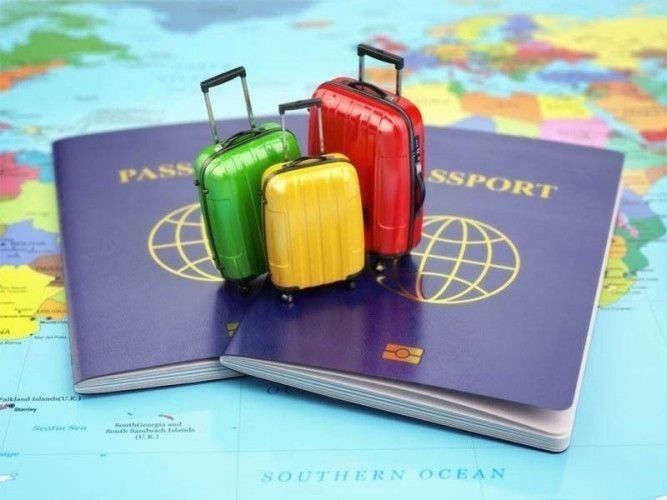
When planning a trip to Peru, eventually bureaucratic and visa related matters come to mind. As finding detailed and up-to-date information on this topic can be challenging, we put together comprehensive information and advice on all Peruvian tourist visa issues that might pop up.
Content overview
Peruvian tourist visa in a nutshell, do i need a visa to enter peru as a tourist, how and where to apply for a peruvian tourist visa, how long can i stay in peru as a tourist, requirements, entry process, how many days did i get when entering peru.
- Extension of Peruvian tourist visa
Expired Peruvian tourist visa
Border-hopping peru, do i need a return ticket when travelling to peru, can i work in peru when on a tourist visa, can i study or do an internship in peru on a tourist visa.
- Can I sign legally binding documents in Peru when on a tourist visa?
Can I volunteer in Peru when on a tourist visa?
- Nationals of some countries need a tourist visa and have to apply for it at a Peruvian consulate before coming to Peru; see PDF under attachments at the end of this really long article to find out if you have to apply for a tourist visa.
- Nationals of other countries can travel visa-free to Peru and receive a "temporary authorization to enter and stay as a tourist for a certain time" (sounds fancy but since the end of May 2023 it's nothing more than an entry in the Migraciones database) at the Peruvian border or airport upon entry.
- Most nationalities that can travel visa-free to Peru are allowed to stay up to 90 days in a 180-day period for touristic, recreational or health purposes (see attached PDF at the end of this really long article to find out if you can enter Peru visa-free and how long you can stay) .
- Peruvian tourist visas issued at a consulate can be single entry or multiple entry visas; The "temporary authorizations" for those who can travel to peru visa-free are single entry.
- All visitors coming to Peru need a passport with at least 2 free pages in the visa section that is valid for at least another 6 months upon arrival.
- As in nearly all countries around the globe, foreigners are not allowed to work in Peru or receive a remuneration for any kind of professional activity in Peru while being in the country on a tourist visa / temporary authorization to enter as a tourist.
- Tourists can only sign legally binding documents (work contract, sworn statement needed, for example, for changing your immigration status, car or apartment purchase, marriage license, ...) with a so called " Permiso para firmar contratos ".
- Extensions of tourist visas / authorizations to enter as a tourist are not possible anymore
Peru is a very welcoming country that signed agreements with many countries, allowing the citizens to travel visa-free to Peru for tourism. Citizens of below mentioned countries do not have to apply for a tourist visa at a Peruvian embassy or consulate before coming to the county. They only need a passport with at least 2 free pages in the visa section that is valid for at least another 6 months upon arrival to get a “temporary authorization to enter and stay as a tourist for a certain time” (sounds great, but today is just an entry in the Migraciones database) directly at the immigration control at the airport or border. For a more detailed listing, please have a look at our PDF "Visas for Peru by country and allowed length of stay" at the end of this very long article for clarification.This PDF is an English translation of the original from the Peruvian Ministry of Foreign Affairs which can be found here .
Following nationals do not need a tourist visa for Peru
- South America: Citizens of all South American countries except Venezuela
- Central America: Citizens of most Central American countries (exception Cuba, El Salvador, Haiti and Nicaragua)
- North America: Citizens of the United States, Canada and Mexico
- Europe: Citizens of all countries within the European Union and Switzerland and UK
- Africa: Citizens of South Africa
- Asia: Citizens of Brunei, Indonesia, Israel, Indonesia, Israel, Japan, Malaysia, Philippines, Singapore and Thailand as well as some citizens of China and India (according to a supreme decree from September 2016 Chinese citizens and according to a supreme decree from March 2017 Indian citizens with a permanent (!) residence visa or a visa with a validity of at least (!) 6 months for the USA, Canada, any country belonging to the Schengen area, UK or Australia can travel to Peru visa-free; other Chinese and Indian nationals still have to apply for a tourist visa at a Peruvian embassy or consulate!)
- Oceania: Citizens of Australia and New Zealand
As already mentioned above, citizens of some countries need a visa even for touristic and recreational purposes (please have a look at our PDF " Visas for Peru by country and allowed length of stay" at the end of this very long article for clarification.). As Peru doesn’t offer online visa applications, these nationals have to apply for a tourist visa at a Peruvian diplomatic mission that has jurisdiction over their domicile or country of residence.
Requirements for the tourist visa application at a Peruvian Consulate
Required documents to apply for a tourist visa include, but may not be restricted to:
- Application form
- Valid passport
- Round-trip ticket
- Hotel reservation, tourist package reservation or invitation letter
- Proof of sufficient funds
- Passport photos
- Proof of legal residency in the area or country under the consulates jurisdiction
- Receipt for paid application fee
Please be aware that the consulate, where you apply, will invite you to a personal interview.
On the website of the Peruvian Ministry of Foreign Affairs (RREE) you find a world map showing all Peruvian consulates abroad . Just click on a marker and the address, phone number, e-mail and - if available - website of the consulate appears.
There is no Peruvian embassy or consulate in my country. Where do I apply?
Especially in Africa and Asia, where the residents of most countries still have to apply for a tourist visa, Peruvian consulates are scarce, website aren’t up-to-date and e-mails often aren't answered. So, finding the correct consulate, getting information and applying for the visa can be quite a challenge. The Peruvian Ministry of Foreign Affairs unfortunately doesn't consistently publish which consulates have jurisdiction over which regions/countries. Therefore, if there is no Peruvian consulate in your country of residence, the only way to find out where and how to apply for a visa is by getting in contact with the nearest Peruvian diplomatic mission (which sometimes isn’t near at all) and ask if they are in charge or know who is.
In March 2017, a new Peruvian Foreigner Law ( Decreto Legislativo 1350 ) went into effect, allowing tourists who can travel visa-free to Peru for touristic, recreational or health purposes to stay for a maximum of 183 days within a 365-day period. Shortly afterwards, the Peruvian Ministry of Foreign Affairs excluded Schengen States nationals from this general rule, allowing them to stay for up to 90 days within a 180-day period. Then, in June 2019, a new publication of the Peruvian Ministry of Foreign Affairs (RREE) eliminated the general 183 days in a 365-day period for most nationalities, who can travel to Peru visa-free, and divided it into two times 90 days in two consecutive 180-day period.
While the new Peruvian Foreigner Law ( Decreto Legislativo 1582 ), which was published in November 2023, confirms that foreign nationals can stay as tourists in Peru for a maximum of 183 days in a 365-day period, the RREE publication is still in place.
So, today, most nationalities who don’t have to apply for a tourist visa before coming to Peru are given up to 90 days in a 180-day period upon entry ; the 180-day period isn't per half year from January to June or July to December but calculated from your first entry.
Brazilian, Chilean, and Mexican nationals as well as those Chinese and Indian passport holders with a permanent residency or a visa with a validity of at least 6 months for the USA, Canada, any country belonging to the Schengen area, UK or Australia, who are still allowed visa-free up to 180 days should know that Peruvian immigration often only gives them 90 days as well upon entry.
In case you have to apply for a tourist visa before coming to Peru, it’s up to the consulate to decide the number of days you can visit the country. Be aware that even if the consulate issued a 180-day tourist visa, often immigration officers only give you 90 days when you enter.
While you generally can expect to get the full days allowed (if you haven’t overstayed your welcome before excessively or if you haven’t been in Peru before and now try to re-enter the country before your 180-day period is over), you should be aware that you aren't entitled to getting the full 90 (or 180) days. As everywhere around the globe, it’s at the discretion of the immigration officer if he or she lets you enter at all and how many days you are allowed to stay.
Please see our PDF " Visas for Peru by country and allowed length of stay" at the end of this very long article to find out if you need a visa to enter Peru or if you can travel visa-free and how long you can stay - this PDF is an English translation of the original from the Peruvian Ministry of Foreign Affairs which can be found here .
Entering Peru
With the introduction of the new Immigration Law in 2017 and progressive digitalization, especially during Covid times, entering Peru today is a quite easy, seemingly organized and at least for now quick process.
After a complete shutdown, Peru re-opened the country for international air travel in October 2020. Land borders only re-opened in mid-February 2022.
Finally, on November 1, 2022, the State of Emergency in Peru was lifted and all Covid entry requirements as well as all other regulations and restrictions that were in place to avoid the spreading of Covid were repealed.
So, entering Peru is back to "normal" and you just need your passport with at least 2 free pages in the visa section that is valid for at least another 6 months upon arrival and, if you have to apply for a tourist visa before coming to Peru, your visa stamp.
After leaving the plane (or at the border), just follow the flow to the immigration control; note: at the beginning of 2023, automated passport control machines were finally put into operations, but for the moment are reserved for Peruvian passport holders.
At immigration control just present your passport (which should have at least 2 free pages in the visa section and must be valid for at least another 6 months upon arrival).
While during the height of the Corona pandemic Peru eliminated the stamping of passports when entering the country, in May 2022 the entry stamp was re-introduced just to eliminate it again at the end of May 2023 for those entering Peru on international flights; and, unfortunately, this time it seems for good.
Today, your entry and the number of days you got is just automatically registered and nothing more than an entry in the Migraciones database. Now tourist once again don't have anything in writing on how long they are allowed to stay as a tourist.
So, to find out how long you can be in Peru as a tourist, you must ask the immigration officer and, if you want to have a confirmation "in writing" or need proof when you entered or left the country, you have to check online. Our article "How many days did I get when entering Peru?" explains how it's done
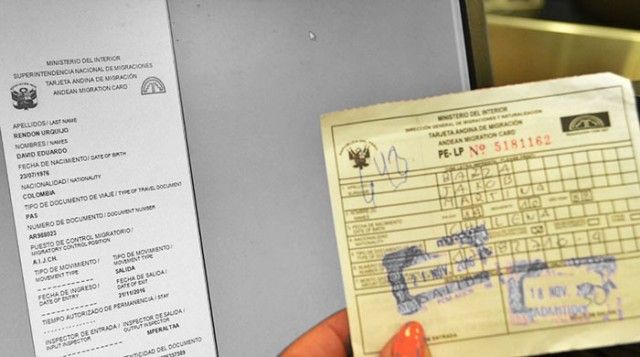
Once you are finished at the immigration counter, proceed to the baggage carousel and claim your luggage.
Clearing customs
Since June 2022, the good old customs declaration form has served its time and was replaced by the App "Bienvenido al Perú" which is available on iOS and Android and in short details which items have or haven’t to be declared. So, if you have something to declare, download the App, fill in required fields and once in Peru proceed to the customs counters at your point of entry.
Peruvian customs urges travelers to know and comply with Peruvian customs regulations. So, it's up to you to inform yourself. Our article “What you can & can’t bring into Peru” helps with this.

What you can & can’t bring into Peru
- If you have nothing to declare , you don’t have to do anything. Clear immigration, get your luggage and proceed to the exit.
- If you have something to declare , download the App "Bienvenido al Perú", follow the instructions and fill in the form within 48h prior to your arrival in Peru. Once in Peru, proceed to the customs counters at your point of entry.
- If you carry more than US$ 10,000 , download the App "Bienvenido al Perú", follow the instructions and fill in the form within 48h prior to your arrival in Peru. Once in Peru, proceed to the customs counters at your point of entry.
We highly recommend to be honest, as failing to declare taxable or dutiable items can result in fines of 50% of the custom value of the items if caught; failing to declare currency over US$ 10,000 results in a 30% fine on the amount you carry with you.
Before you can leave the airport, you and your luggage are scanned and you might be asked to follow an official for a thorough check of your luggage.
You made it! Welcome to Peru!
After not stamping passports during peak Corona times, in May 2022, tourists entering the country finally got an entry stamp again, making it easy to check how long they could stay in Peru.
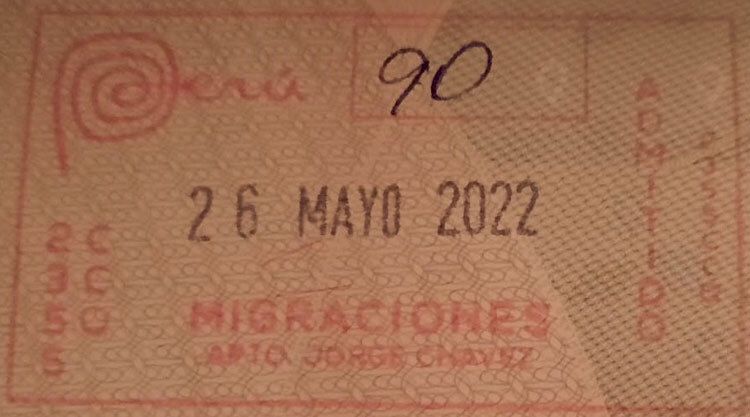
Unfortunately, at the end of May 2023 Peru eliminated the entry stamp again for those entering Peru on international flights.
So now, the only way to find out how many days you are allowed to stay as a tourist in Peru, is to ask the immigration officer or, if you prefer a written confirmation check online. Our article “How many days did I get when entering Peru?” explains in detail the legal background and gives you options to check the number of days you are allowed to stay in Peru as a tourist.
Extension of a Peruvian tourist visa
For the past two decades, every few years the regulations in Peru would change, determining if foreigners can extend their stay as a tourist in the country or not.
Since August 2021, foreign tourists couldn't extend their time in Peru anymore.
However, this general “no” for tourist visa extensions was softened with the implementation of new Migraciones administrative regulations on October 22, 2023, which allow foreign nationals from member countries of the Andean Community, and only these (!), to extend their stay as a tourist again and abolished with the new Foreigner Law, Decreto Legislativo 1582 on November 14, 2023.
The new Foreigner Law, Decreto Legislativo 1582, published on November 14, 2023, states that foreign tourists can stay in Peru for 183 accumulated days in a 365-day period; so, half a year within one year. It further describes that in case foreign tourists don't get the full 183 days, an extension can be granted until the 183 days are reached, unless international agreements or conventions determine a shorter period or don't allow extensions.
At the moment (February 7, 2024), the administrative regulations, called TUPA, necessary for the implementation of the new Foreigner Law still haven't been published. So, we don't know, which foreign nationals can extend (exception: Bolivians, Ecuadorians and Colombians, who at the moment are the only ones, who can extend) or for which nationalities there might be restrictions or when foreigners might be able to extend or how it works. So, right now we have to wait for more official news.
You can find detailed background information on the topic in our article "Tourist Visa extension in Peru".
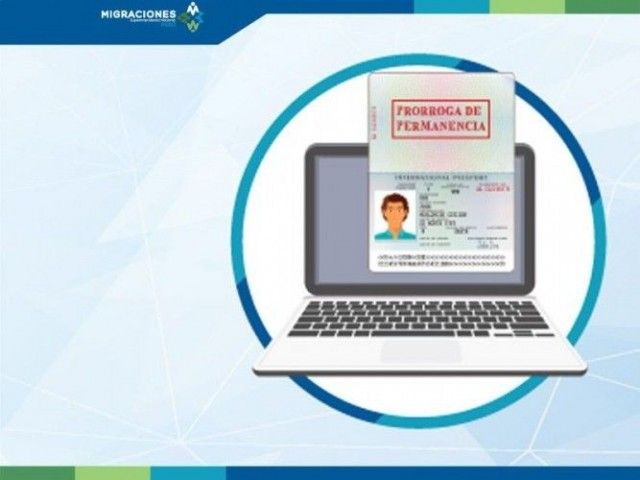
Like in any other country, we recommend respecting the rules and regulations here in Peru, including the time you are allowed to stay in the country as a tourist.
However, if you overstayed your stay as a tourist a few days, weeks or even months - at least for now - you rarely have to fear extreme consequences. When leaving Peru you just have to pay a fine of 0.1% of an UIT (S/ 5.15 in 2024) per day you overstayed. The fee must be paid before leaving the country. In our article "Peruvian Overstay fine for tourists" we explain the details
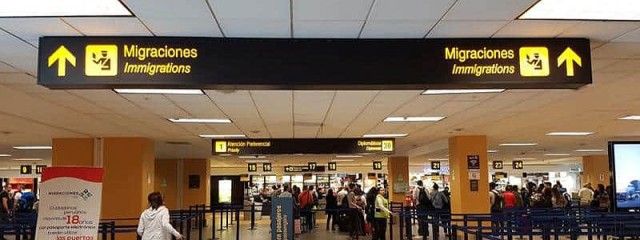
Peruvian Overstay Fine for tourists
Once the fine is paid, you can usually leave Peru with no reprisals.
Those having excessively overstayed their welcome (we are talking about many months or even years), however, might be additionally sanctioned with a re-entry ban for a certain time.
Between 2008 and 2017, border hopping was an easy and popular way to “renew” your tourist visa. Back then, the Peruvian foreigner law stated that visitors can enter Peru for touristic, recreational, or health purposes for 183 days. It however didn't mention if the 183 days were per year or per visit. So, many foreigners used this little gap in the old Peruvian immigration law to live in the country on a tourist visa. As soon as their visa was about to expire, they just crossed the border, stayed 5 minutes, a day or two, in one of Peru’s neighboring countries and returned asking immigrations for another 183 days. For years, this worked absolutely fine.
After the introduction of the new foreigner law (Decreto Legislativo 1350) in 2017 which rectified the loophole and the reduction of the time most nationalities can stay visa-free in Peru two years later, Peruvian border officials got stricter and increasingly applied the new rules giving foreigners only the back then allowed 90 or 183 days in a 180 days or 365 days period and didn’t let border-hoppers re-enter (or only for a few days) when they already stayed the maximum allowed time as visitor in the country.
Then in March 2020, Covid hit the country, borders were closed and Migraciones worked hard on digitalizing certain processes and procedures. Now, all entries and exits are saved in the Migraciones database and can be retrieved at all control points.
Since August 2021, travelers, who already stayed their allowed 90 days in a 180-day period, reported that when trying to re-enter the country at Lima’s airport before their 180-day period was over, that they were scolded and only given anything between 3 and 30 days. And according to reports from travelers who tried to re-enter Peru at a land border after already having stayed their 90 days, immigrations often only gave a few days up to a month. Others reported that they still got the full 90 days, however only if they haven't already stayed the max of 183 days in a year.
So, be aware that it's always at the discretion of the immigration officer and his/her evaluation of your situation how long you are allowed to stay in Peru.
One way or the other, the times of border-hopping seem to be over and foreigners wanting to stay longer in Peru should work on getting a "real" temporary visa (for example, a temporary work visa or a temporary student visa) or a residence visa. Our Visa Guide explains the most common temporary and residence visas including the legal background, requirements, necessary preparation work and a step-by-step application guide.
Peruvian law requires that foreign visitors need a return or onward passage out of the country if they aren't residents, proving that they leave the country when the visa or temporary authorization to enter expires. But the law doesn't state that this return or onward passage must be an airline ticket; it could be anything proving that you leave Peru when the time comes.
When entering the country, Peruvian immigration officials hardly ever ask to see this proof. The ones executing above regulations are usually the airlines. As they could be held responsible and have to fly you back, if denied entry to Peru, most airlines require a return or onward flight ticket to even let you check-in to your flight to Peru.
So, if you plan to come to Peru on a one-way ticket, it’s best to check the requirements of your carrier. Some insist on a flight ticket showing that you leave the country, others accept a reservation for a return flight, a few are happy with a bus ticket and there are as well airlines that let you fly with just a one-way ticket.
If your airline requests a return or onward ticket, you could always make a reservation for one, print the confirmation, and then depending on the agency, you either don't pay it and let it expire or cancel it within a certain time. Other options include buying a fully refundable ticket or, more affordable, "renting" a ticket.
A Peruvian tourist visa / temporary authorization for tourists allows entry for touristic, recreational, or health purposes only. Even though there are quite a few foreigners working in Peru for a Peruvian company on a tourist visa, Peruvian law explicitly prohibits to work in Peru for a Peruvian company or to receive a remuneration for any kind of professional activity in Peru while visiting the country as a tourist.
Generally no , sometimes yes.
For more information, please have a look at our detailed article "Peruvian Student Visa".
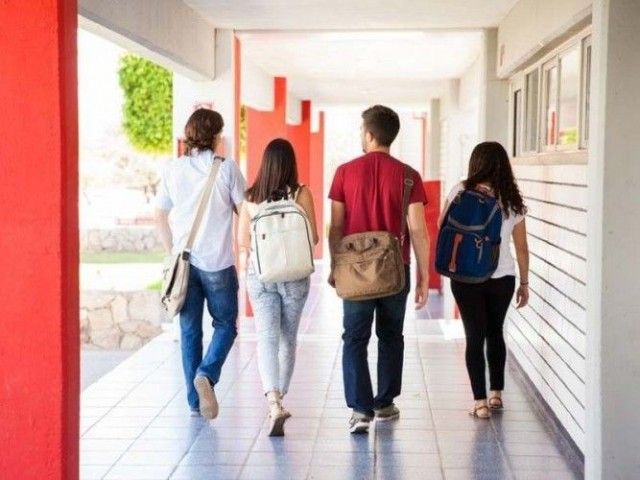
Peruvian Student Visa
Can i sign legally binding documents in peru when on a tourist visa.
Before signing a legally binding document (work contract, sworn statements, car or apartment purchase, marriage license, ...) tourists have to apply for a so called "Permiso para firmar contratos". Our article "Permit to sign contracts" explains in detail how it works and what you have to do.

Permit to sign contracts (Permiso especial para firmar contratos) in Peru
Officially, no! But in reality, it's done all the time. Find more information in our article "Peruvian Volunteer Visa".
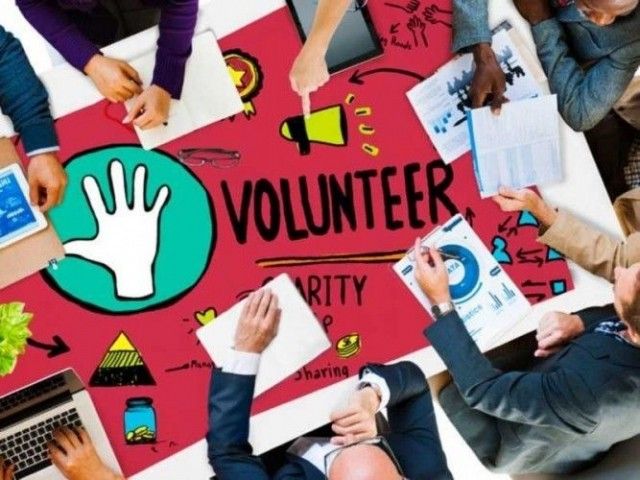
Peruvian Volunteer Visa - Visa cooperante
!!! As visa and entry regulations can change quickly without prior notice, we highly recommend confirming current visa requirements with the nearest Peruvian embassy or consulate !!!
Attachments
- File Description File Size File Type Downloads

- 36 Comments
- Subscribe Unsubscribe
- Collapse All Expand All
or post as a guest
- decreto legislativo 1582 article 29 1 h.jpg ">
- DS 1350 article29-1 h turista.jpg ">
- netherlands.jpg ">
- DS 1350 turista.jpg ">
- rree us.jpg ">
- ley31731.jpg ">
- ley 31732.jpg ">
Peru Newsflash

New lizard species discovered in Peru

Peru has the second-worst drivers in the world

Machu Picchu reopens for the first time after the social outbreak

Peru extends the state of emergency in 44 districts
Peru event calendar, upcoming events in peru.
More in the Peru Event & Entertainment Calendar
Latest Content...

International Christian School of Lima - ICS Lima

Peruvian Digital Nomad Visa

Legislative Decree No. 1582 (Modification of the Peruvian Foreigner Law, Nov 2023)

Queso Rojo de Lluta

Peruvian Queso Andino

Peruvian Quesillo

Peruvian Queso Mantecoso

Peruvian Queso Paria

Peruvian Queso Fresco

Extension of a Migraciones deadline

Amnesty for Migraciones fines

Update your information in the Migraciones database

Replacement for a lost, stolen or damaged carné

Renewal of the Carné de Extranjería
Latest video.

Maria Reiche - Memories
Long reads....

The Mystery of the Nazca Lines in Peru

Francisco Pizarro González (1474-1541)

The colorful Fabrics and Textiles of Peru

The Jeweled Frog and the Condor

lima·easy - /ˈli mə/ - /ˈi zi/
In loving memory of "Jack" & "Lola"
- Skip to main content
- Skip to site information
Language selection
Help us to improve our website. Take our survey !
Traveller entry requirements
How to prepare for crossing the border into Canada
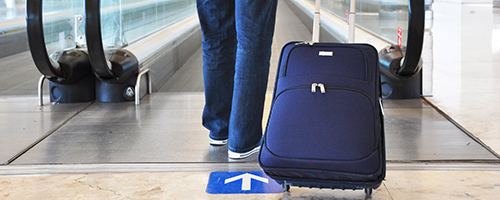
Services and information
Travel and identification documents for entering canada.
Acceptable documents, establishing your personal identity, your citizenship and other important information
Find out if you can enter Canada
Visas, Electronic Travel Authorizations and other documentation you may need to enter or transit through Canada
Visas, Electronic Travel Authorizations and other documentation you may need to enter or transit through Canada.
Information on what you can bring back to Canada, what to declare, duties and taxes, and personal exemptions
Airport arrival kiosks and eGates
Verify your identity and make a customs declaration at Canada’s major international airports
Directory of CBSA border offices and services across Canada
List of designated CBSA offices and service locations across Canada
Examining digital devices at the Canadian border
Your cell phones, tablets, laptops and any other digital device you are carrying can be examined when you when cross the border
Reporting requirements for private boaters
Options, exceptions, consequences for failing to report and more.
Reporting requirements for non-commercial aircraft
Landing private, company-owned or charter aircraft in Canada
Advance Declaration: Save time at the border
Use Advance Declaration in ArriveCAN to submit your customs and immigration declaration before flying into Canada
Top 3 Peru Travel Visa Options
Peru, with its diverse landscapes, rich cultural heritage, and warm hospitality, has become an increasingly popular destination for remote workers and expats looking for a blend of adventure, affordability, and spectacular scenery. Good news is that there is a variety of options for Peru travel visas.
Whether you want to explore the mountains, enjoy tasty food, or experience different cultures, Peru has it all.
In this guide, we’ll talk about the different visas you can get to live and work in Peru, so you can make your ideal lifestyle work for you.
Understanding Visa Options in Peru
What are the digital nomad visa options, why consider the peru tourist visa exemption, who are eligible for the peru tourist visa exemption, requirements, how to apply, processing time, why apply for a peru tourist visa, who can apply, why get it, who can apply for the rentista visa, requirements to apply for the rentista visa, how to apply for the rentista visa, processing time for rentista visa, costs of applying for the rentista visa, why remote workers and expats choose peru , drawbacks of living in peru, cities to live in peru as a digital nomad, wrapping up.
When it comes to staying in Peru for an extended period, there are various visa options available to choose from, each catering to different needs and circumstances. These visas are designed to make your stay in this vibrant country as smooth as possible. Here are some of the key visa options:
- Visa exemption While not really a visa option, this exemption allows certain nationalities to forgo the need to apply for any visa when visiting Peru
- Tourist Visa The tourist visa is a popular choice for those looking to explore Peru for a shorter duration. It allows you to stay in the country for up to 183 days within a 365-day period. Whether you’re an avid traveler or a digital nomad who prefers short stays, the tourist visa is a flexible option.
- Rentista Visa If you’re a retiree seeking a peaceful life in Peru, the Rentista Visa might be the ideal choice. To qualify for this visa, applicants must demonstrate a steady source of income, such as a pension or investments, providing financial stability during their stay.
- Business Visa Business professionals and entrepreneurs can opt for a Business Visa, which permits them to engage in commercial activities within Peru. This visa often requires proof of your business intentions in the country.
- Work Visa For those planning to take up employment in Peru, the Work Visa is essential. You’ll need a valid job offer from a Peruvian employer to qualify for this visa.
- Student Visa Students looking to pursue education in Peru can apply for a Student Visa. It’s crucial to secure admission to a recognized educational institution to obtain this visa.
- Investor Visa If you plan to invest in the Peruvian economy, the Investor Visa is the route to take. This visa requires a significant financial investment in the country.
- Family Reunion Visa Designed for those with family members who are Peruvian residents or citizens, the Family Reunion Visa allows you to join your loved ones in Peru.
- Andean Community Visa Citizens of Andean Community countries, including Colombia, Bolivia, and Ecuador, can take advantage of this special visa program, simplifying their stay in Peru.
- Migrant Visa The Migrant Visa caters to individuals with foreign or Peruvian national spouses, promoting family reunification.
- Diplomatic and Official Visa These visas are for government officials, diplomats, and employees of international organizations representing their respective governments in Peru.
It’s important to note that visa application processes and requirements may vary, and it’s advisable to consult with a legal expert or immigration consultant who can guide you through the application process and provide accurate details on associated costs.
Who Doesn’t Love Cheap Flights?

Skyscanner is your trusted service for buying cheap flight tickets, with no extra fees or markups! Their flight search will not only find the best option for your specific dates, but it will also offer another period when the cost may be even lower.
Among the visa options available in Peru, the most popular for digital nomads or remote workers are:
- Visa exemption
- Tourist visa
- Rentista visa
We’ll look at each visa option in the next section.
Tourist Visa Exemption Scheme
Peru offers a Tourist Visa Exemption Scheme that allows citizens of various countries to visit without the need for a tourist visa.
No formal application process is required for this visa exemption. Eligible travelers need only arrive in Peru to enjoy their visit.
The duration of stay granted under this exemption typically allows for a 90-day visit. However, some countries enjoy extended stays:
- Brazil and Chile offer a 180-day stay within a year.
- Citizens of the Dominican Republic are granted a 60-day stay.
- Mexicans can stay for up to 183 days.
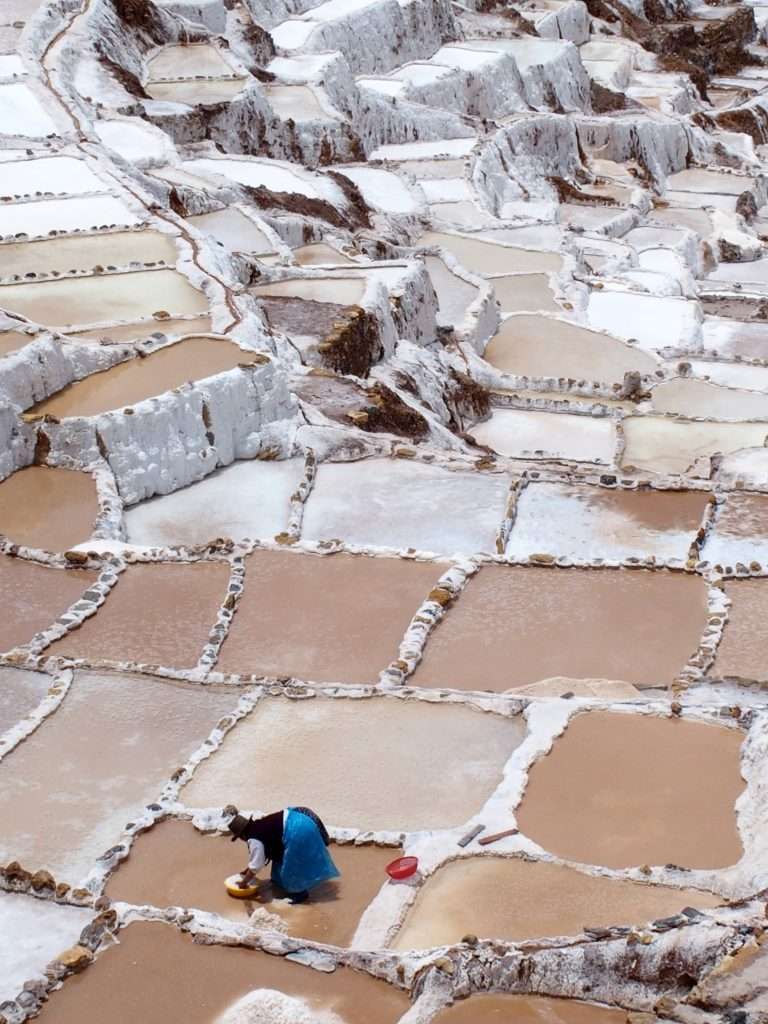
Travelers from the following nations can enjoy this privilege: Antigua and Barbuda, Argentina, Barbados, Belize, Bolivia (Plurinational State of), Brazil, Canada, Chile, Colombia, Commonwealth of Dominica, Costa Rica, Ecuador, Grenada, Guyana, Honduras, Jamaica, Mexico, Panama, Paraguay, Peru, Saint Kitts and Nevis, Saint Lucia, Saint Vincent and the Grenadines, Suriname, Trinidad and Tobago, the United States of America, the United States of Mexico, and Uruguay.
There are no specific requirements to fulfill for the Tourist Visa Exemption Scheme. It offers a hassle-free way for eligible travelers to explore Peru.
As this is an exemption scheme, there is no need for travelers to complete an application. The process simply involves arriving in Peru for the allowed duration.
The Tourist Visa Exemption Scheme has no formal processing time, as it is applied automatically upon entry to the country.
This visa exemption comes at no cost, making it an attractive option for tourists wanting to explore the wonders of Peru.
T ourist Visa
For those entering Peru for tourism or who come from visa-exempt countries, a tourist visa provides an opportunity to extend their stay beyond the initial visa-free period. Because of its generous stay duration, this is the closest you can get to a Peru digital nomad visa.
Tourists entering under visa-free agreements can enjoy a maximum stay of 183 days, except for nationals of the Schengen Area member states and associated countries who are permitted to stay up to 90 days within 180 days without a visa. Costa Rican and Panamanian citizens can stay for a maximum of 90 days per visit.
However, individuals from countries that are not visa-exempt must apply for a tourist visa to explore Peru further.
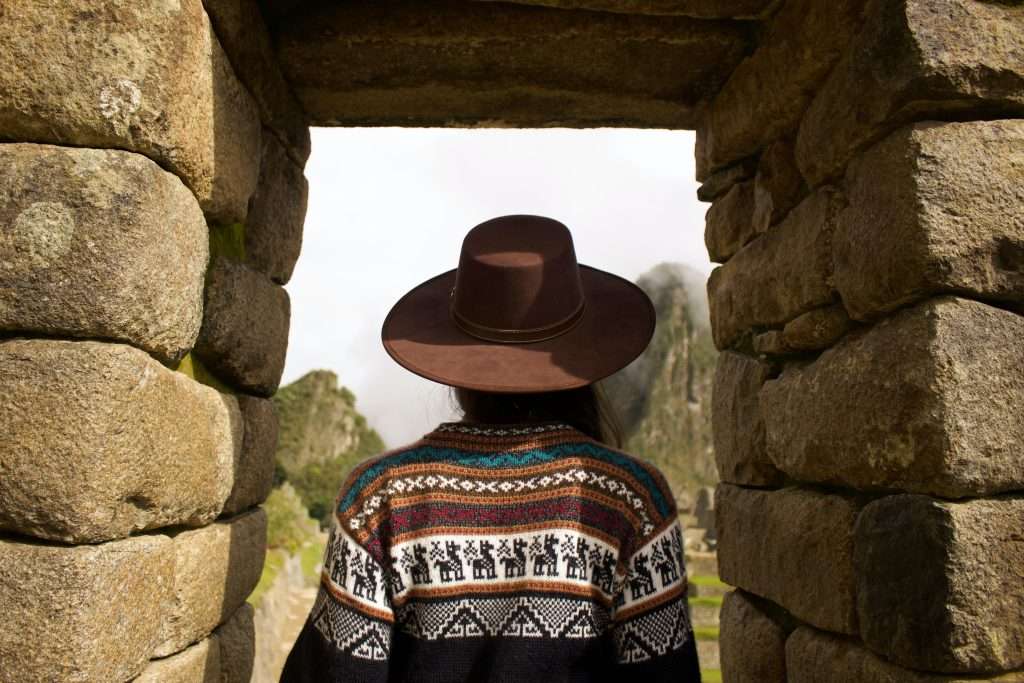
Requirements for tourist visas may vary depending on your country of origin. In the case of Canada, applicants should complete the following steps:
- Download and fill out the Form DGC005 .
- Present your current passport or Canadian Permanent Resident Card if you are from Canada.
- Provide a reservation or round trip ticket.
- Include either a hotel reservation, a reservation for a tourist package, or a letter of invitation.
- Submit two (2) photographs of 35 x 45 mm, taken within the last six months. The photos should feature a plain white background with your face and shoulders centered and squared to the camera. Your eyes should be open, clearly visible, and looking straight at the camera, with a closed mouth (no smiling or frowning). Avoid wearing glasses, hats, or head coverings, except those worn daily for religious beliefs.
- Present sufficient financial documents to demonstrate economic solvency.
- Pay the required consular fees.
The application process varies depending on your country of residence. Here are some general guidelines:
- In Canada , you can either book an in-person appointment or send your application by mail.
- In Australia , the entire process can be completed digitally by sending scanned documents to the Peruvian consulate’s email.
- In the US , it is preferable to schedule an appointment due to the requirement for a personal interview.
The processing time for tourist visa applications generally ranges from 15 days to 3 weeks, depending on your country of origin.
The cost of applying for a tourist visa is 45 CAD (Canadian dollars) or 32 USD (United States dollars).
Rentista Visa
The “Rentista Visa” is one of the most popular residence visas in Peru, particularly among retirees and even remote workers with passive income. It is designed for individuals who can demonstrate a source of income or financial means to support themselves without engaging in work within the host country. The term “rentista” is derived from the Spanish word for “pensioner” or someone who receives regular income, such as a pension or retirement funds.
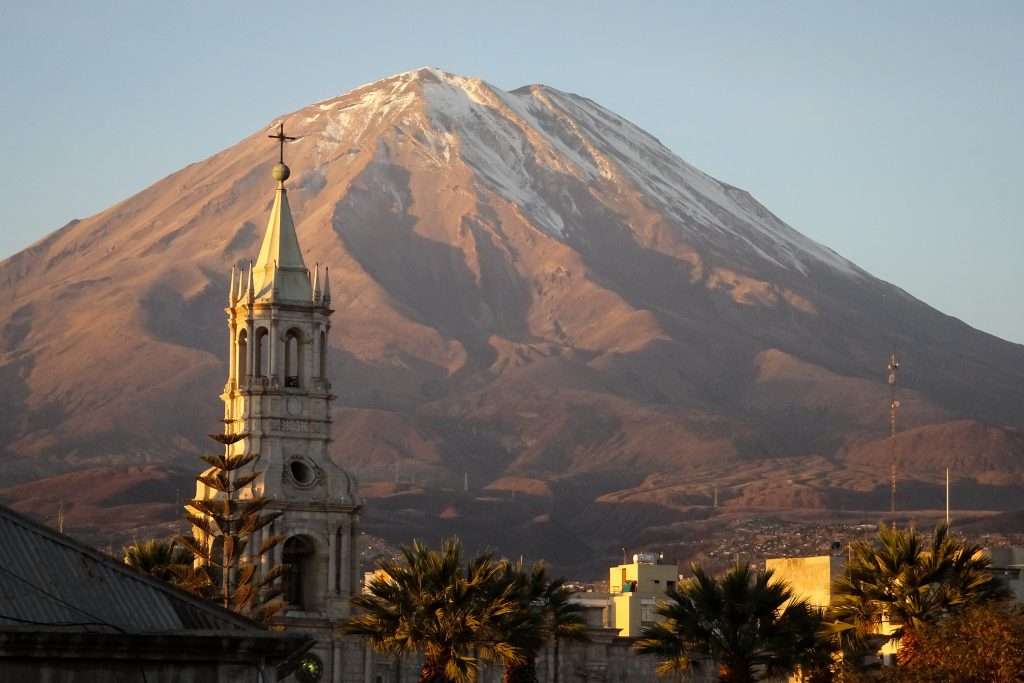
The Rentista visa in Peru offers the possibility of citizenship eligibility after residing in the country for two years, provided a minimum of 183 days are spent in Peru each year and proficiency in Spanish is demonstrated.
Alternatively, applicants not pursuing citizenship can opt for permanent residency after three years, allowing indefinite living in Peru; however, work is not permitted.
The application process is quick, with no investment or donation requirements.
To retain the visa, spending at least six months in Peru annually is necessary. Holders are granted a Carné de Extranjería, facilitating local banking, mobile phone purchase, and internet access.
To qualify for a Peru Retirement Visa, applicants must demonstrate a source of passive income amounting to at least $1,000 per month ($12,000 per year) or its equivalent in another currency. This monthly income must originate from outside of Peru and enter the country through a bank. Employment income or salary is not considered as passive income; it must be a consistent and permanent income source.
Additional eligibility criteria include:
- Residing outside of Peru to acquire immigration status.
- A clean police, criminal, and judicial record in both your country of origin and any other place where you previously held residence.
- If you intend to include your spouse and dependents, their age must be under 25 years. However, please note that the minimum required income increases by US$500 per dependent.
The necessary documents and steps to apply for a Rentista visa are as follows:
- Complete and sign the immigration quality application form .
- Provide a simple copy of your valid passport, which should remain valid for at least another 12 months when beginning the application process.
- Obtain a document from the competent authority that certifies the absence of a judicial, criminal, and police record in your country of origin, as well as any place where you resided for the five years preceding your entry into Peru.
- If you plan to include family members on the Rentista visa, you must furnish apostilled marriage certificates or birth certificates for your children.
- This may include providing a simple power of attorney, registering the power of attorney in Public Registries with a validity of the last 30 calendar days, or presenting a consular power of attorney apostilled or legalized by the Ministry of Foreign Affairs.
- Present a current identity document (ID) if you are Peruvian or a temporary immigration card or immigration card if you are a foreigner. In the latter case, you must also attach a simple copy of the document.
- If you are a foreigner with migratory status in Peru, you should possess a valid stay or residence permit.
For income from national sources, you must also provide:
- A simple copy of the document verifying the receipt of the monthly permanent income by the applicant.
For income from foreign sources, you must also submit:
- A simple copy of the document from the country where the income originates, demonstrating that the applicant receives a minimum permanent net income of US$1,000 monthly.
- An affidavit indicating that the money enters Peru through a banking or financial entity supervised by the Superintendency of Banking, Insurance, and AFP (SBS).
To apply for the Digital Nomad Visa in Peru, follow these steps:
- Payment : You’ll need to pay a fee of 105.60 soles, using code 07567, at any agency of the Banco de la Nación branch. Keep the receipt as you’ll need the information for your application. Attach the required documents in a single PDF file.
- Translations and Police Clearance (If Applying in Peru) : If applying within Peru, get your documents translated to Spanish. Consider obtaining an Apostille and using government-approved translators from the Peruvian government website. Also, obtain a “Ficha de Canje Internacional” or police clearance from Interpol in Peru.
There are two application methods:
- Overseas Apply for “Solicitud de calidad migratoria rentista” on Agencia Digital if you’re outside Peru and can’t enter visa-free. You’d need to pick up your visa at a Peruvian consulate, but this process may lack detail.
- Within Peru While the initial steps can be done online, you’ll need to be in Peru for the later stages. Apply online through the Agencia Digital . Remember that this platform is in Spanish, and using translation programs is not recommended.
Once you have it open, select Extranjero

Complete the process, including a detailed questionnaire and document uploads. You’ll eventually reach the “Pago por derecho de tramite” page, where you must enter bank receipt information, including the receipt number, verification code, and date of the transaction.
After completing these steps, you will get to the “Registro de Solicitud de Cambio de Calidad Migratoria” which confirms your successful application. Be sure to download and/or print the form and keep it safe.
Your application will have a unique file number, sometimes referred to as “Numero de expediente” or “Numero de tramite,” which consists of two letters (typically an abbreviation for the Migraciones office where you applied, such as LM for Lima) and nine numbers.
Additionally, the application date and a verification code will be displayed on the first page, underneath the signature/fingerprint field. Afterward, you’ll receive confirmation and your file details.
You can check the status of your application on Agencia Digital or access your Buzon Electronico . Once approved, arrange to get your biometric data taken and you will receive a notification about your visa status. If approved, you’ll be asked to collect your Carné de Extranjería.
For a more comprehensive guide, you can refer to this step-by-step instruction .
The processing time for a Digital Nomad Visa application is approximately 30 business days. However, in reality, it often takes 2-3 months to receive an official notification of visa approval.
To apply for the Digital Nomad Visa, you’ll need to remit a fee of 105.60 soles to Banco de la Nacion, a Peruvian bank.
Remote workers and expats are increasingly drawn to Peru for a multitude of reasons, including:

- Adventure and Exploration Peru is an adventure playground. You can explore the famous Inca Trail , go surfing by the coast, and do lots of outdoor activities in your free time.
- Affordable Living Living in Peru doesn’t cost a lot. It’s one of the cheapest places in South America , where you get a good life without spending too much.
- Great Food Peru is celebrated as the world’s culinary capital. Its food scene is a delightful fusion of indigenous ingredients and diverse culinary traditions. The famous ceviche, a zesty seafood dish, is just one example of the mouthwatering offerings that await your taste buds.
- Diverse Climates Peru’s climate spans from the arid deserts of the coast to the subtropical rainforests of the Amazon basin. This climatic diversity means you can experience everything from warm, sun-soaked summers to snowy winters, providing a little something for everyone.
- Rich Culture Peru’s cultural richness is a result of its intricate blend of Hispanic and indigenous influences. Music and dancing are a big part of life, and each region has its own style.
- Beautiful Nature Peru has stunning natural places. You can see deserts, rainforests, mountains, and volcanoes. If you love the outdoors, Peru is perfect.
- Warm Hospitality Peruvians are renowned for their warmth and openness to newcomers. The welcoming atmosphere and friendly nature of the people add immeasurably to the overall appeal of life in Peru. Whether you’re in bustling cities or remote villages, you’ll find the same open-hearted spirit.
- Good Healthcare Peru has good and affordable healthcare, which is important for retirees and expats looking for quality medical services.
All these things make Peru a fantastic choice for remote workers and expats who want an affordable, tasty, diverse, and friendly place to live.
Need to Always Stay Connected?

We recommend using the Airalo eSIM while traveling as a digital nomad. Airalo is the world’s first eSIM store that solves the pain of high roaming bills by giving travelers access to eSIMs in over 200+ countries.
Peru is a great place to be in but be aware of potential drawbacks as well:
- Language Barrier While Spanish is the official language, not everyone in Peru speaks English fluently. If you’re not proficient in Spanish, communication can be a challenge, especially in smaller towns.
- Bureaucracy Dealing with government agencies and paperwork can be slow and cumbersome. It’s essential to have patience when navigating bureaucratic processes, such as visa applications.
- Traffic and Transportation In larger cities like Lima, traffic congestion can be a significant issue. Public transportation can be crowded, and road conditions in some areas may not be ideal.
- Safety Concerns Petty crime, such as pickpocketing, is common in crowded areas and tourist destinations. While violent crime rates are relatively low, it’s crucial to stay vigilant and take necessary precautions.
- Healthcare in Rural Areas While urban areas offer excellent healthcare facilities, rural regions may have limited access to quality medical care. Expats with specific healthcare needs should consider proximity to medical facilities.
- Altitude Sickness If you plan to live in high-altitude areas like Cusco or Arequipa, you may experience altitude sickness. It’s advisable to acclimatize slowly to avoid health issues.
- Income Disparities Peru faces economic disparities, and poverty can be visible, particularly in rural areas. The cost of living might be low for expats, but many locals struggle with economic challenges.
- Environmental Concerns Pollution can be an issue in some urban areas, affecting air quality. It’s essential to consider environmental factors when choosing your place of residence.
- Cultural Adjustment Adapting to a new culture and its customs can be challenging. While Peruvians are generally welcoming, cultural differences may take time to get used to.
- Natural Disasters Peru is prone to natural disasters like earthquakes and flooding. Being prepared and informed is vital, especially if you live in areas susceptible to such events.
Despite these drawbacks, many expats have found a fulfilling life in Peru by taking these factors into account and making the necessary adjustments.
Peru offers several cities and regions that are ideal for remote workers and expats due to their unique combination of affordability, lifestyle, and amenities:

- Lima The capital city, Lima, is the country’s economic and cultural hub. It provides a bustling urban environment with a wide range of housing options, international cuisine, and excellent healthcare facilities. Neighborhoods like Miraflores and Barranco offer a vibrant expat community, making it a convenient choice for remote workers.
- Arequipa Known as the “White City,” Arequipa combines a rich cultural heritage with a more relaxed pace of life. The city boasts beautiful colonial architecture, a pleasant climate, and a lower cost of living compared to Lima. It’s particularly appealing to those who prefer a smaller, less hectic city.
- Cusco If you’re looking for a unique and historically rich setting, Cusco is an excellent choice. The former capital of the Inca Empire offers stunning mountain views and access to cultural sites like Machu Picchu . While it’s a bit more touristy, it’s a great base for digital nomads who love history and nature.
- Cusco Sacred Valley Located near Cusco, the Sacred Valley is an attractive option for those who want to immerse themselves in the Peruvian Andes. This peaceful area offers a serene environment, excellent hiking opportunities, and a tranquil lifestyle.
- Trujillo This coastal city provides a quieter atmosphere and a lower cost of living. With beautiful beaches nearby and a strong historical presence, Trujillo is an emerging destination for remote workers.
- Huanchaco Just north of Trujillo, Huanchaco is a beach town that combines surf culture with a laid-back lifestyle. It’s ideal for those who want to work by the sea and enjoy a close-knit expat community.
- A jungle city (e.g., Iquitos) For those who prefer a more adventurous setting, a city in the Amazon jungle can offer a unique experience. Iquitos, for instance, is the largest city in the world inaccessible by road. It provides a different way of life close to the Amazon rainforest.
When choosing a place to live as a remote worker in Peru, consider factors like climate, cost of living, and proximity to essential amenities. Each location has its charm and unique offerings, so it ultimately depends on your lifestyle preferences and work requirements. Be sure to visit these places to get a feel for what suits you best before making a decision.
Peru provides various visa options for remote workers and expats looking to reside in it. The tourist visa suits those seeking short stays, while the Rentista visa offers a path to long-term living. The possibility of acquiring citizenship after two years of continuous residence is an appealing prospect for those aiming to make Peru their permanent home.
Whether you’re attracted by Peru’s affordability, diverse climates, delectable cuisine, or the, breathtaking landscapes, there’s a visa choice that aligns with your needs. If anything, the tourist visa alone is already generous with its 183 day stay limit.
Ultimately, the choice of visa depends on your specific circumstances, and it’s essential to carefully consider the requirements, benefits, and limitations of each option.
Can I have multiple visas?
The Peruvian visa recognizes dual citizenship, so yes you can
Should I apply for a tourist visa or rentista visa?
It depends, if 183 days is enough for you in a year, a tourist visa will do just fine but if you intend to stay longer than that then a rentista visa is a good option. Although it is important to note tha you will lose your rentista visa if you do not meet the residency requirements.
Does Peru have a digital nomad visa?
Peru does not have digital nomad visa, but their tourist visa offers a maximum of 183 day stay, which is generous. The other option is their rentista visa whose requirements are not as strict as most countries’ digital nomad visas or alternative visas.
How much money do they expect to be in your bank account?
For the tourist visa, the government is mostly concerned whether you have enough funds to meet the minimum cost of living in the country. For the rentista visa, they do not generally check for the amount on your bank account but they need proof that you are a recipient to a monthly stipend or have a passive source of income of at least USD 1,000 per month
How long can I stay in Peru for each type of visa?
With the visa exemption, you can generally stay for up to 90 days. With the tourist visa, the maximum for any nationality is 183 days. However, if you get the rentista visa, you can stay indefinitely
Do digital nomads with rentista visa pay taxes in Peru?
If you’re granted a retirement visa in Peru, you are not liable to pay taxes in Peru. The amount of your permanent and monthly income originating from one of the sources mentioned above doesn’t matter. However, you may have to pay taxes in your country of origin.
Is it possible to extend your stay if you’re holding a visa-exempt passport?
Yes, you can extend your stay by applying for a tourist visa, however, the most you can stay in a calendar year is 183 days
How long does it take to complete the visa application process?
The tourist visa application is fairly straightforward and you can complete it within an hour.
However, the rentista visa requires more time and it requires at least two hours (appointments not included). You can get legal help but immigration lawyers, legal consultants or tramitadores charge anything between US$500 up to US$1400 for a simple visa application
Can you apply for the Peru visa while abroad?
You can apply for the tourist visa while overseas, and the same goes for the rentista visa. However, it is recommended to be in Peru when applying for the rentista visa.
Is it possible to bring a partner or children with the approved rentista visa?
Yes you can, although you’ll need to have an show that you have a higher minimum required income for each dependent
Related Posts

Peru is a country with diverse geography and climates, but this does not mean that it has great weather all year round. As a rule of a thumb, the best…

Ecuador is becoming a popular choice for digital nomads with tourist arrivals doubling in 2022 compared to the previous year. For those fortunate enough, a visa exemption might suffice. However, those…
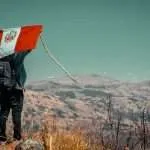
Are you wondering, "Is Peru Safe?" while planning your next adventure in this captivating South American destination? Peru, the enchanting third-largest country in South America, beckons with its iconic attractions,…
Leave a Comment Cancel reply
Save my name, email, and website in this browser for the next time I comment.
Destinations
Remote work.
© Half Digital Nomad
© 2024 Cable News Network. A Warner Bros. Discovery Company. All Rights Reserved.
CNN Sans ™ & © 2024 Cable News Network.

Sigue la cobertura
Perú anuncia que exigirá visa a ciudadanos mexicanos en respuesta a las restricciones introducidas por México
Por Karol Suárez

Notas relacionadas
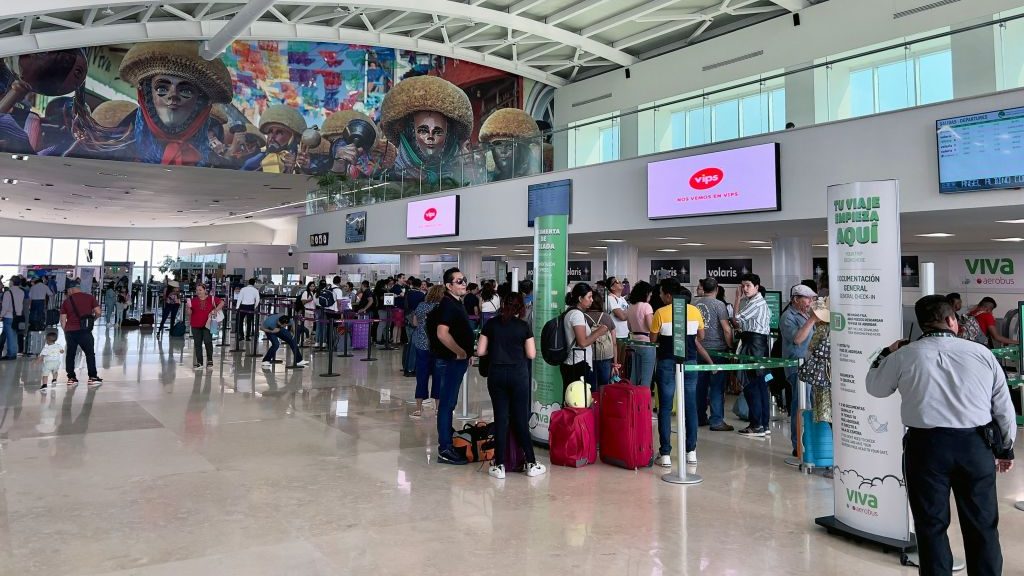
México impone visado a peruanos
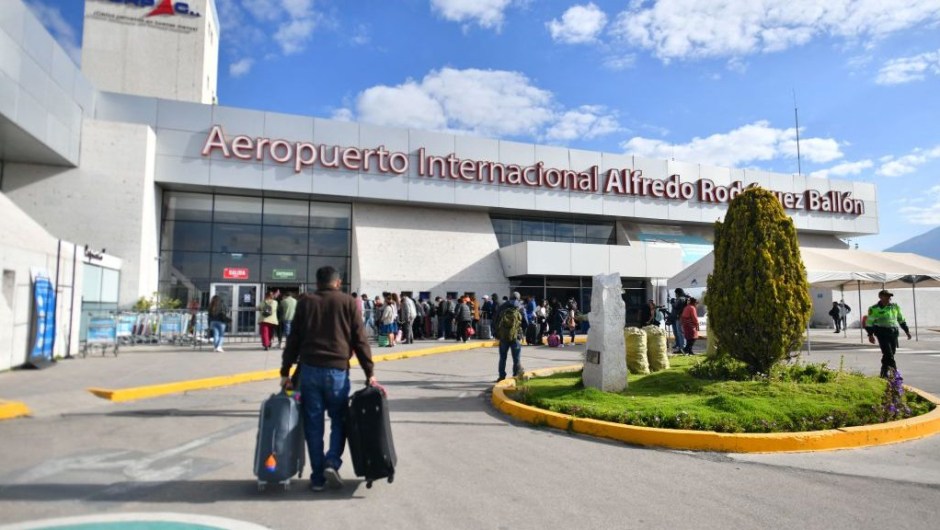
(CNN) -- Perú anunció el sábado que exigirá visas a los ciudadanos mexicanos en respuesta a las nuevas restricciones introducidas por México el día anterior, según el Ministerio de Asuntos Exteriores .
"Ante el anuncio unilateral del Gobierno de México de imponer la exigencia de visa temporal para los ciudadanos peruanos que decidan visitar su país, y en aplicación del Principio de Reciprocidad, regla fundamental en la relación entre Estados soberanos, el Gobierno del Perú impondrá el requisito de visa a los ciudadanos mexicanos que decidan visitar nuestro país", dijo la Cancillería en un comunicado.
La Cancillería lamentó la decisión de México por considerar que "menoscaba los esfuerzos por mejorar las relaciones bilaterales y afecta los compromisos programáticos asumidos en la Alianza del Pacífico para facilitar el libre movimiento de personas entre ambos países".
El viernes, el Gobierno de México anunció que impondría restricciones de entrada a partir del 20 de abril después de que el país dijera que había visto un aumento sustancial en el número de peruanos que entraban en su territorio que tenían inconsistencias en su documentación y no parecían ser turistas.
México dijo que el requisito comenzaría a aplicarse a partir del 20 de abril.
¿Quiénes no necesitarán visa?
Ambos países dijeron que habrá excepciones a sus nuevos requisitos.
Perú informó que no necesitarán visa aquellos mexicanos que cuenten con la visa Schengen (espacio integrado por 29 naciones europeas), del Reino Unido, Estados Unidos, Canadá, Australia o Japón, ni "aquellos que posean residencia permanente en los países concernidos y en los miembros de la Alianza del Pacífico". La Cancillería precisó que precisarán las excepciones en un próximo decreto.
The Mexican government published an agreement that will require Peruvian nationals wishing to enter Mexico as a visitor without permission to engage in paid activities to obtain a visa from the Mexican consular authority. The measure, announced on Thursday, will come into effect starting from April 20, 2024, and will not apply to Peruvians holding a valid visa or permanent resident card from any country within the Schengen area .
Since 2012, Mexico has waived the visa requirement for Peruvian nationals with visitor status without authorization to engage in paid activities within Mexico. However, as stated in the agreement published on Thursday, Mexico’s recent decision to revoke this privilege is allegedly in response to a significant increase in the number of Peruvian nationals entering Mexican territory to engage in activities not authorized under their visitor status. The Mexican government observed that part of this situation is reflected in the immigration filters, where they claim to have identified Peruvian individuals with visitor status who do not fit the profile of genuine visitors or tourists and who present inconsistencies in their documentation or information.
However, the agreement stated that the measure is temporary and will remain in effect until safe, orderly and regular migratory flows can be guaranteed. In this regard, the Mexican government has indicated that it will work with the Peruvian government to achieve this, as stated in Article 3 of the Agreement:
The Ministry of Foreign Affairs shall carry out joint actions with the Government of the Republic of Peru, in accordance with current regulations, in order to ensure safe, orderly, and regular migratory flows that will eventually allow the elimination of the visa requirement for nationals of said country.
Nevertheless, the Peruvian Foreign Ministry issued a press release on Saturday deploring Mexico’s decision, saying that it undermines efforts to improve bilateral relations and affects commitments made in the Pacific Alliance to facilitate the free movement of people between the two countries. In addition, the Peruvian government announced that it would also impose a visa requirement on Mexican citizens wishing to visit Peruvian territory:
In response to the unilateral announcement by the Government of Mexico to impose a temporary visa requirement on Peruvian citizens wishing to visit their country, and in application of the principle of reciprocity, a fundamental rule in relations between sovereign states, the Government of Peru will impose a visa requirement on Mexican citizens wishing to visit our country. […] Like Mexico, Peru will make some exceptions, which will be specified in a forthcoming Supreme Decree. In this regard, Mexican citizens who have Schengen visas, British visas, Canadian visas, US visas, Australian visas, and Japanese visas, as well as those who are permanent residents of the countries concerned and members of the Pacific Alliance, will not require a visa (translated from Spanish).
It is worth noting that before the aforementioned agreement, there were already diplomatic tensions between Mexico and Peru. In December 2022, the Peruvian government expelled the Mexican ambassador in Lima Pablo Monroy due to statements made by representatives of the Mexican government in support of former Peruvian President Pedro Castillo , who was accused of attempting a failed coup . Despite this, Mexican President Andrés Manuel López Obrador has continued to reiterate his support for Castillo, calling for his release and criticizing Peruvian President Dina Boluarte, calling her a “false president.” Then, in September 2023, López Obrador said that he would not attend the 2024 Asia-Pacific Economic Cooperation (APEC) Leaders’ Summit—which Peru will host—citing that Mexico “has no relations with Peru.”
Titanic sinking precipitated multiple lawsuits
The Titanic sank early in the morning of April 15, 1912 after colliding with an iceberg in the North Atlantic. Of 2228 passengers and crewmembers aboard, only 705 survived. The sinking gave rise to a variety of lawsuits against the White Star Line, the Titanic 's owners.
Andrew Johnson sworn in after Lincoln assassination
On April 15, 1865, Vice-President Andrew Johnson was sworn in as the seventeenth President of the United States, after Abraham Lincoln was assassinated by John Wilkes Booth. Johnson became the first U.S. President to be impeached, but he was not convicted. Learn more about Andrew Johnson and his impeachment from the Library of Congress.
The information contained herein is general in nature and is not intended, and should not be construed, as legal, accounting or tax advice or opinion provided by Ernst & Young LLP to the reader. The reader also is cautioned that this material may not be applicable to, or suitable for, the reader's specific circumstances or needs, and may require consideration of non-tax and other tax factors if any action is to be contemplated. The reader should contact his or her Ernst & Young LLP or other tax professional prior to taking any action based upon this information. Ernst & Young LLP assumes no obligation to inform the reader of any changes in tax laws or other factors that could affect the information contained herein.
Copyright © 2024, Ernst & Young LLP.
All rights reserved. No part of this document may be reproduced, retransmitted or otherwise redistributed in any form or by any means, electronic or mechanical, including by photocopying, facsimile transmission, recording, rekeying, or using any information storage and retrieval system, without written permission from Ernst & Young LLP.
Any U.S. tax advice contained herein was not intended or written to be used, and cannot be used, by the recipient for the purpose of avoiding penalties that may be imposed under the Internal Revenue Code or applicable state or local tax law provisions.
"EY" refers to the global organisation, and may refer to one or more, of the member firms of Ernst & Young Global Limited, each of which is a separate legal entity. Ernst & Young Global Limited, a UK company limited by guarantee, does not provide services to clients.
Privacy | Cookies | BCR | Legal | Global Code of Conduct Opt out of all email from EY Global Limited.
Cookie Settings
This site uses cookies to provide you with a personalized browsing experience and allows us to understand more about you. More information on the cookies we use can be found here . By clicking 'Yes, I accept' you agree and consent to our use of cookies. More information on what these cookies are and how we use them, including how you can manage them, is outlined in our Privacy Notice . Please note that your decision to decline the use of cookies is limited to this site only, and not in relation to other EY sites or ey.com. Please refer to the privacy notice/policy on these sites for more information.
Yes, I accept Find out more
We've detected unusual activity from your computer network
To continue, please click the box below to let us know you're not a robot.
Why did this happen?
Please make sure your browser supports JavaScript and cookies and that you are not blocking them from loading. For more information you can review our Terms of Service and Cookie Policy .
For inquiries related to this message please contact our support team and provide the reference ID below.

IMAGES
VIDEO
COMMENTS
You need a visitor visa to travel to Canada. A visitor visa: is a sticker we put in your passport; costs CAN$100; Processing times vary by country. You may need to give your fingerprints and photo (biometrics) Opens in a new tab with your application. Processing time doesn't include the time you need to give biometrics.
Tourist visa: not required for a stay of less than 90 days per 365 day period Business visa: required Student visa: required. If you entered Peru with a business visa, you must obtain a certificate from the Peruvian Ministry of the Economy to prove that all Peruvian taxes on income earned during the trip have been paid prior to leaving the country.
Lawful permanent residents of the U.S. As of April 26, 2022, lawful permanent residents of the United States must show these documents for all methods of travel to Canada: a valid passport from their country of nationality (or an equivalent acceptable travel document) and. a valid green card (or equivalent valid proof of status in the United ...
Contact us. To find out how and where to submit your application, see your instruction guide. Use our Web form to: ask about your application. ask a general question about a program or service. give new information about your application. change your contact information. add, change or remove a representative. report a technical problem.
5. You travel to Canada (if you're approved) Make sure you travel with the documents we gave you. This includes travel documents like a visitor visa, study or work permits or an eTA (electronically linked to your passport). Airline staff and border service officers at ports of entry will ask to see your travel documents.
Requirements. Fill out the form provided by the Peruvian Consulate (DGC 005). Personal interview, scheduled by the Peruvian Consulate. Present a valid passport with more than six (6) months at the time of entering Peru. Round Trip ticket to Peru (Reservation. The purchase of a ticket does not guarantee the issuance of a visa).
Download, complete and sign the following: Form DGC005. Send the current passport. Proof that you are resident in Canada. If you are a Permanent Resident, we need a notarized copy of your Canadian Permanent Resident Card. ; If you are a Temporary Resident, we need a copy of your Working or Study Permit.Please also be sure that your visa to Canada is valid if you plan to return to Canada after ...
Step 2: Apply online. 1. Create an account. 2. Upload your documents. 3. Pay your fees. How to apply for a visitor visa.
Embassy of Canada to Peru, in Lima. Address: Calle Bolognesi 228, Miraflores, Lima 15074, Peru. Service (s) provided at this office: Citizenship services. Consular services. General enquiries.
Call (+511) 200 1000. Visas and entry procedure. If you wish to stay longer for other reasons, such as business, studying or working, you need to request the relevant visa at a Peruvian consulate or embassy in your own country. Consulates and embassies. Directory of Peruvian.
Peruvian citizens must obtain a visa before travelling to Canada. Canada Visitor visa is required for Peruvian citizens. With this tourist visa stay is usually short with a period of 180 days and visa expires in 180 days. Applicant is required to be present when applying for Canada tourist visa. A total of 10 documents are required for applying Canada tourist visa.
Both visa types cost about S/112. In general, tourist visa requirements include a passport with a 6-month validity minimum, a round-trip flight itinerary, hotel reservations and proof of financial solvency. This article was first published August 2021 and updated December 2023. Curious if you need a visa for visiting Peru?
Cash limit. Any amount up to CAD$10,000 (or foreign equivalent) can be freely imported or exported. Travellers must report anything over this amount to the Canada Border Services Agency (CBSA) when they arrive or leave. For further information on this recommendation, please visit the CBSA Travelling with CAN$10,000 or more.
Visa Requirements. With a few exceptions, visas for citizens of the USA, UK, Canada, Japan, and most other EU Nationals are NOT REQUIRED for entry into Peru. Tourists are permitted a 183-day, non-extendable stay, stamped into passports, as well as a tourist card called a Tarjeta Andina de Migración (Andean Immigration Card). Do not lose this!
Call us in Washington, D.C. at 1-888-407-4747 (toll-free in the United States and Canada) or 1-202-501-4444 (from all other countries) from 8:00 a.m. to 8:00 p.m., Eastern Standard Time, Monday through Friday (except U.S. federal holidays). See the State Department's travel website for the Worldwide Caution and Travel Advisories.
Travel and tourism; Business and industry; Benefits; Health; Taxes; ... Embassy of Canada to Peru, in Lima. We provide services to Canadians visiting and living in Peru. ... Get a visa to study, work or visit Canada. Voting abroad. Voting process for Canadians who live abroad. Office information
Travel to Peru From Canada: A Complete Guide. Peru is one of the most sought after options to travel in South America. The so-called Country of the Incas is recognized for its prevailing cultural expression, natural wonders, and historical attractions which fills it with countless adventures and mysteries for all ages and tastes.
Foreign nationals applying for a Peru tourist visa should follow these steps: Complete visa application form. Fill out a Peru visa application form, complete with your personal details and other requested information. Submit visa application form. • Set an appointment at your nearest Peru embassy, consulate or representation office.
Peruvian tourist visas issued at a consulate can be single entry or multiple entry visas; The "temporary authorizations" for those who can travel to peru visa-free are single entry. All visitors coming to Peru need a passport with at least 2 free pages in the visa section that is valid for at least another 6 months upon arrival.
Find out if you can enter Canada. Visas, Electronic Travel Authorizations and other documentation you may need to enter or transit through Canada. Customs. Information on what you can bring back to Canada, what to declare, duties and taxes, and personal exemptions. Airport arrival kiosks and eGates.
The tourist visa is a popular choice for those looking to explore Peru for a shorter duration. It allows you to stay in the country for up to 183 days within a 365-day period. Whether you're an avid traveler or a digital nomad who prefers short stays, the tourist visa is a flexible option. Rentista Visa.
Perú anunció el sábado que exigirá visas a los ciudadanos mexicanos en respuesta a las nuevas restricciones introducidas por México el día anterior, según el Ministerio de Asuntos Exteriores.
April 7, 2024 01:18:27 pm. The Mexican government published an agreement that will require Peruvian nationals wishing to enter Mexico as a visitor without permission to engage in paid activities to obtain a visa from the Mexican consular authority. The measure, announced on Thursday, will come into effect starting from April 20, 2024, and will ...
Effective 20 April 2024, nationals of Peru must obtain a visa prior to entering Mexico for business, tourism or to transit through the country. Starting on this date, Peruvian nationals will be required to have a visitor visa prior to travel, a passport that is valid for at least 180 days and other supporting documents (e.g., invitation letter ...
Peru will no longer require tourist visas for Mexican tourists, putting an end to a short-lived diplomatic move meant to reciprocate on similar restrictions imposed on Peruvian tourists traveling ...